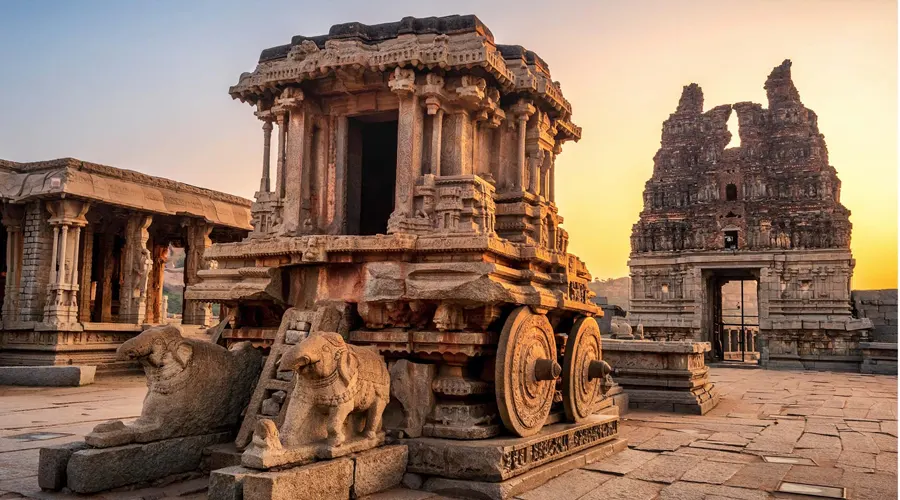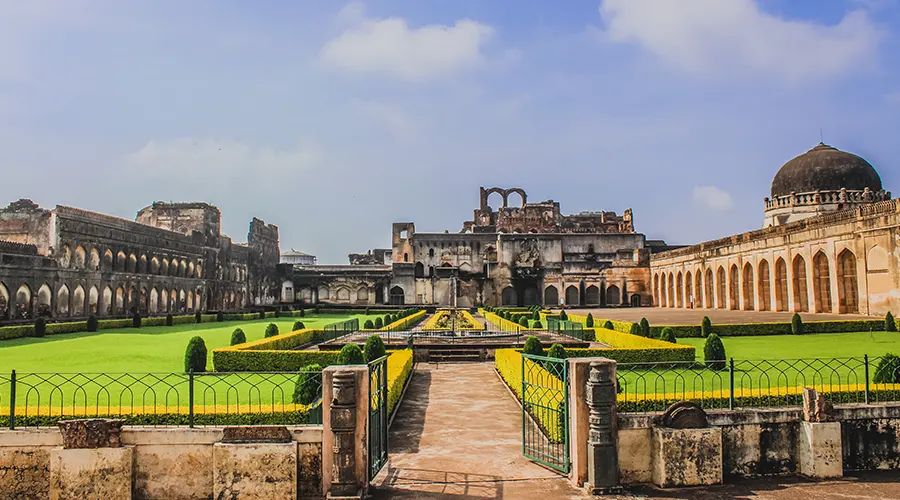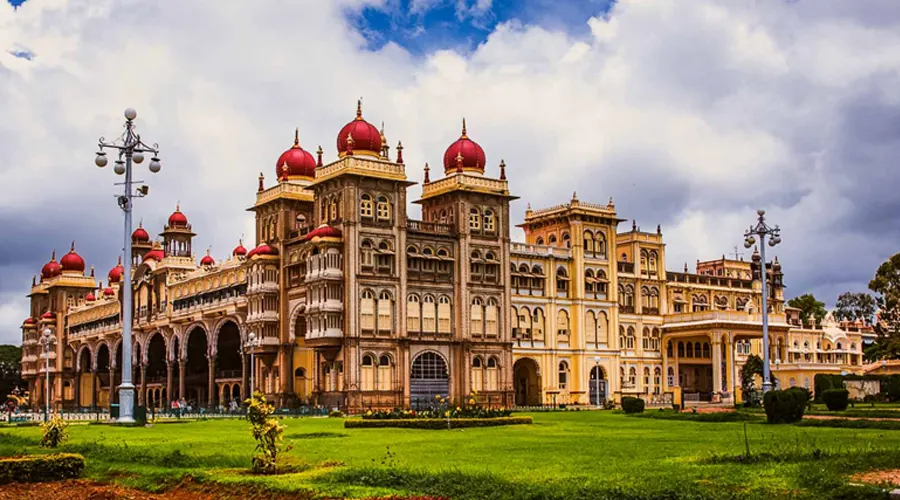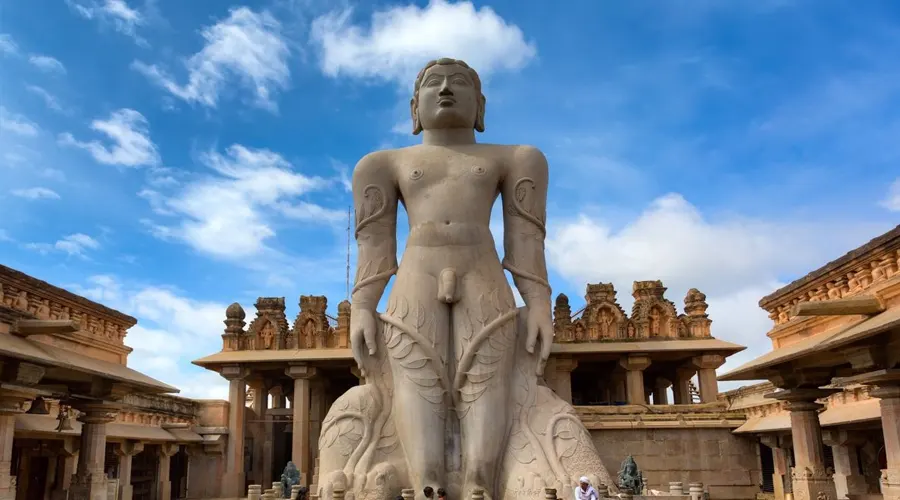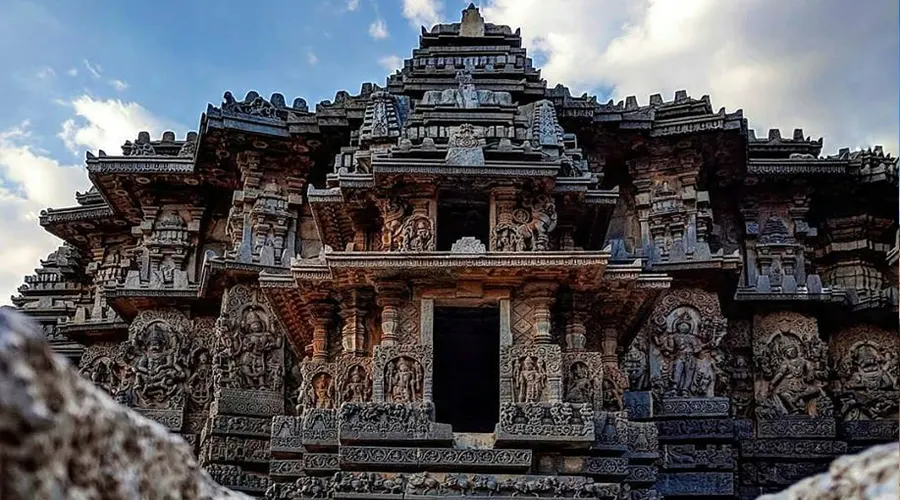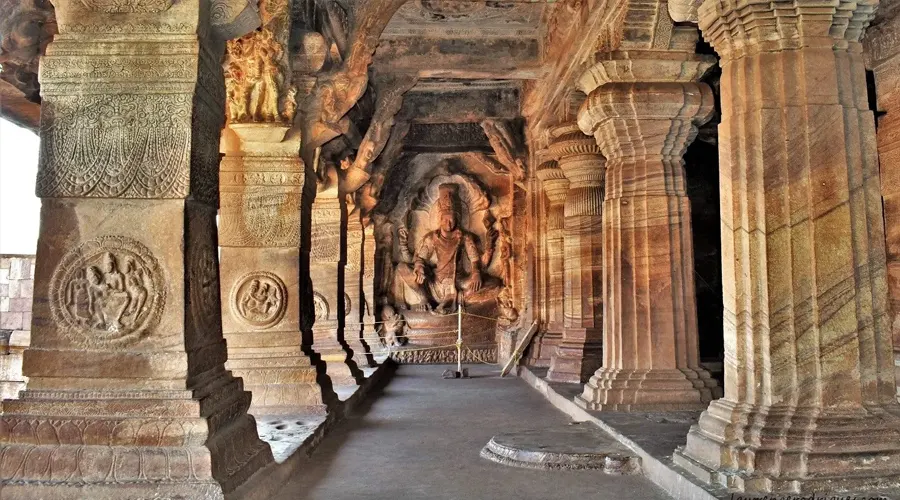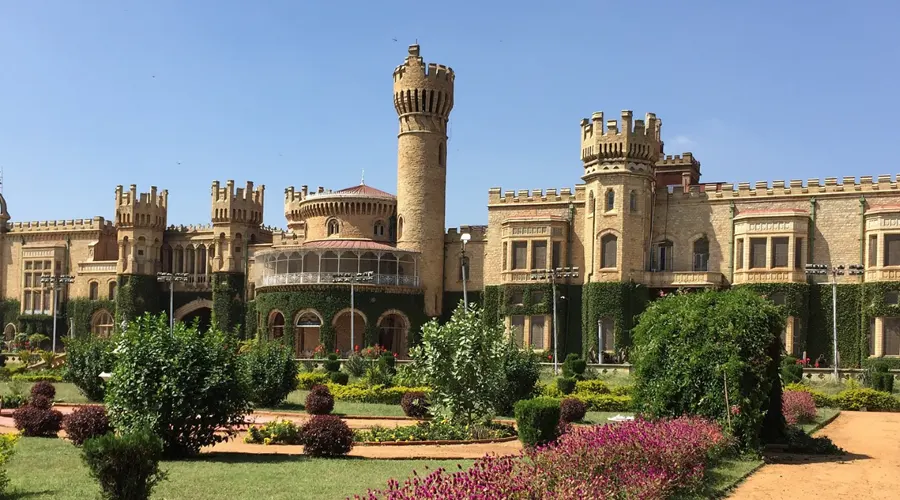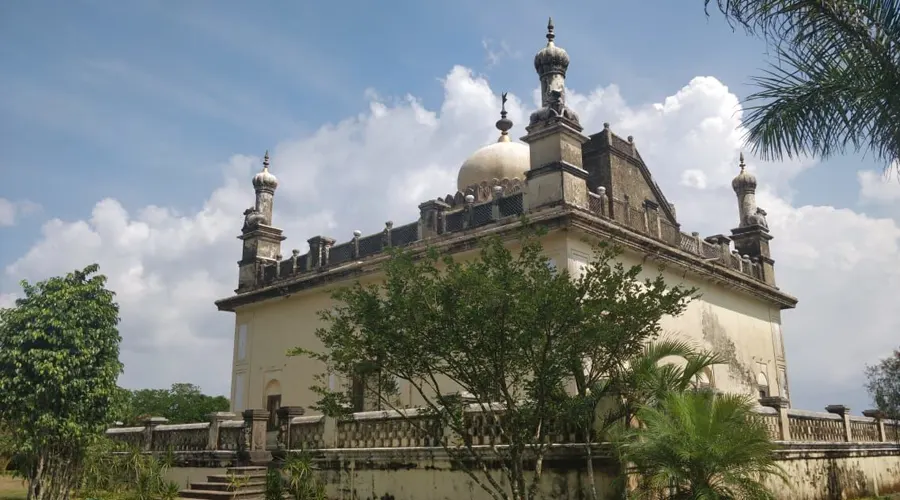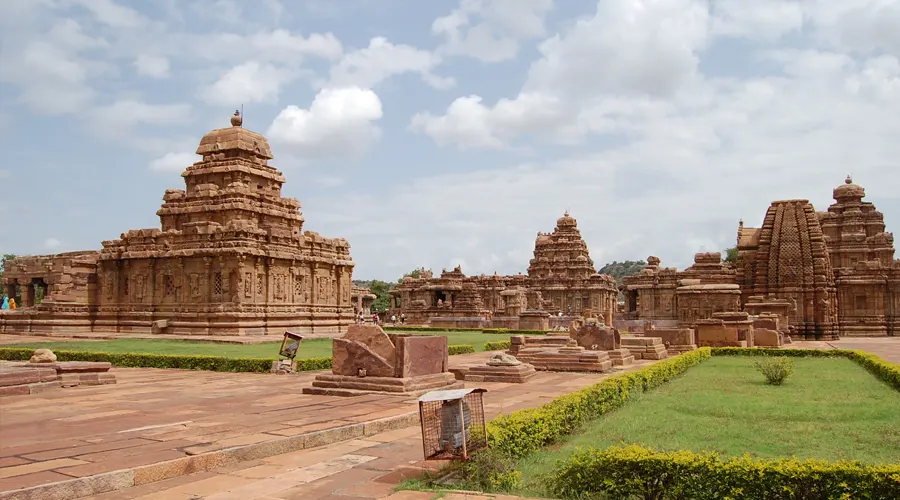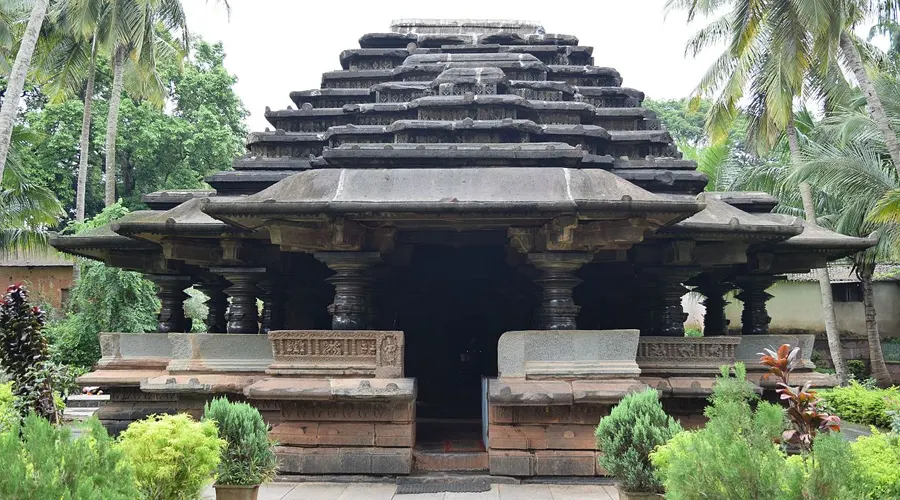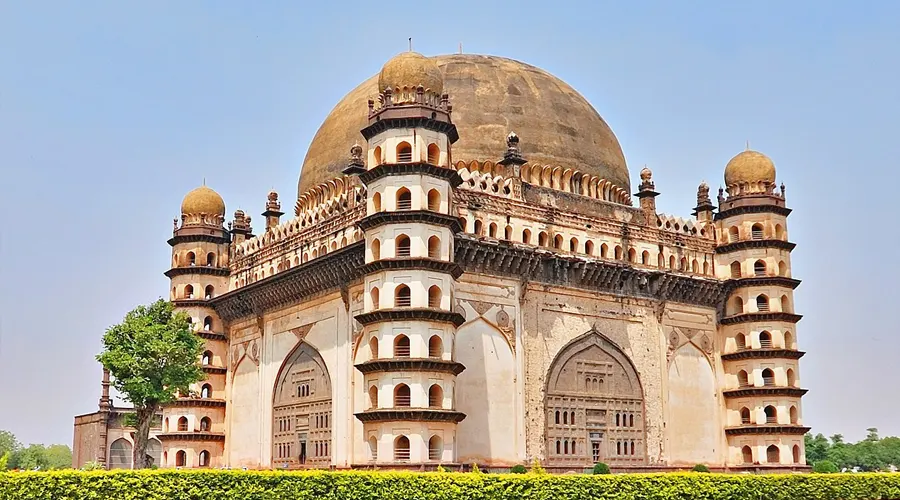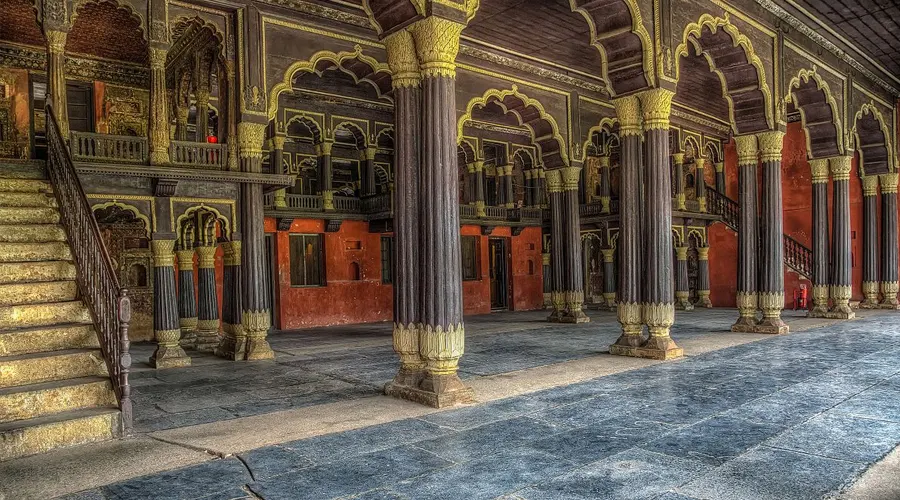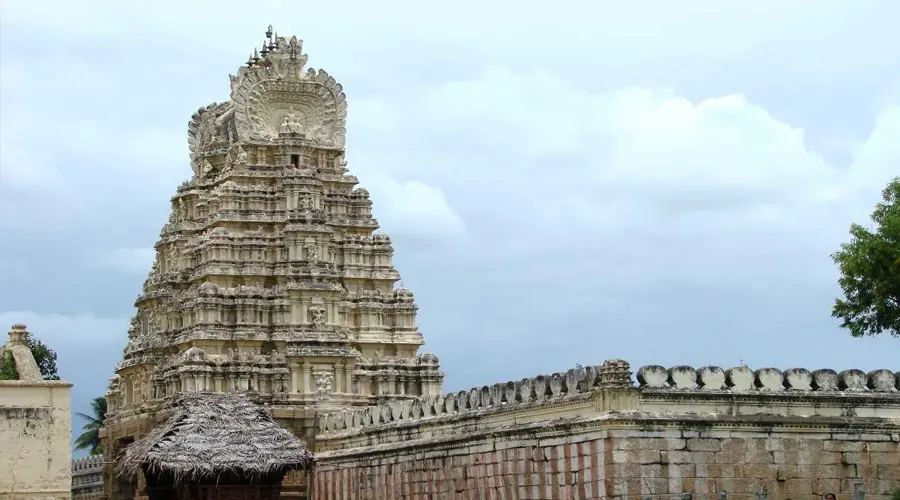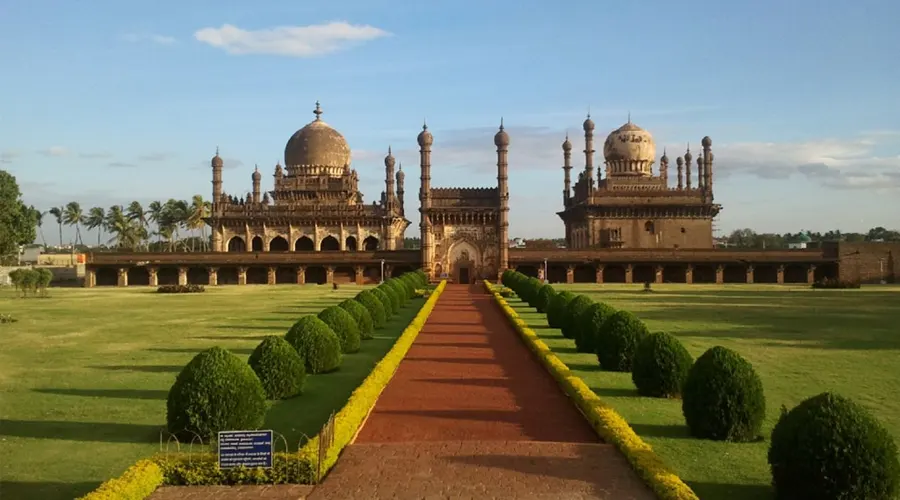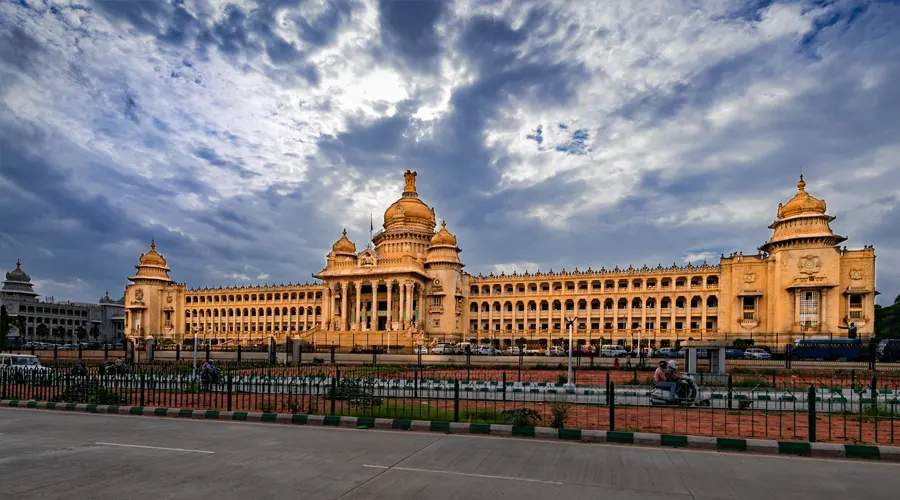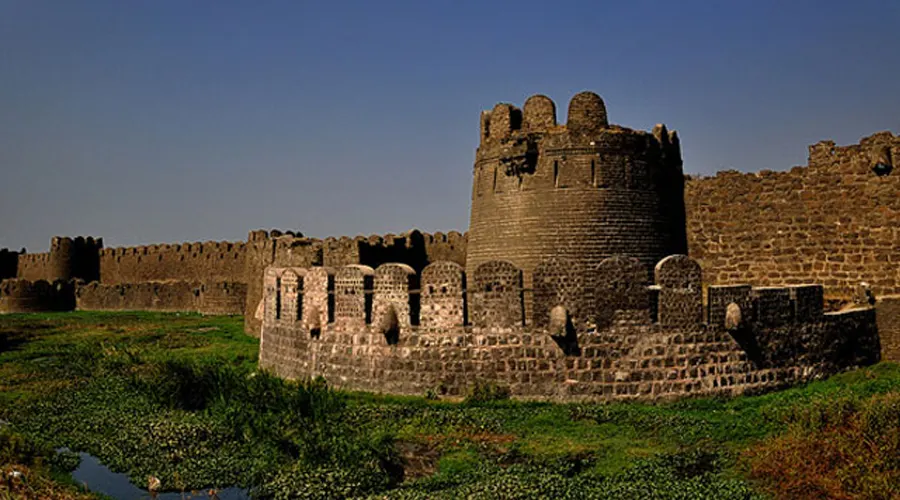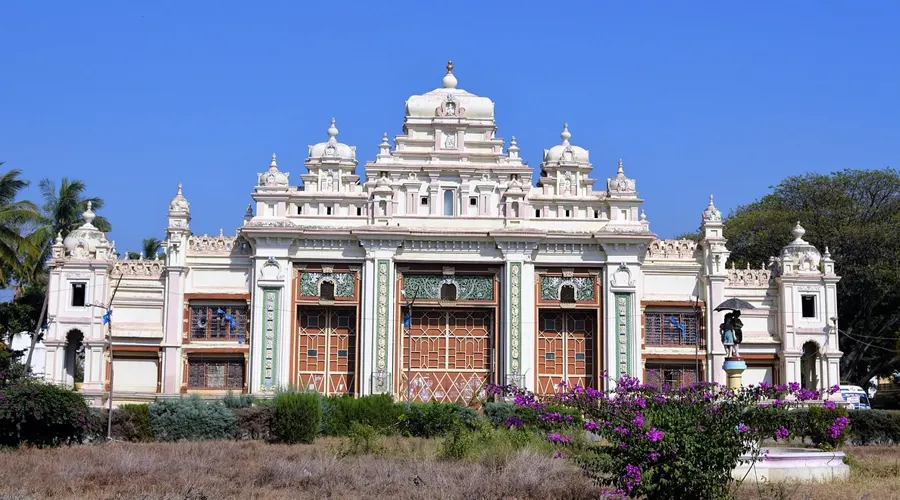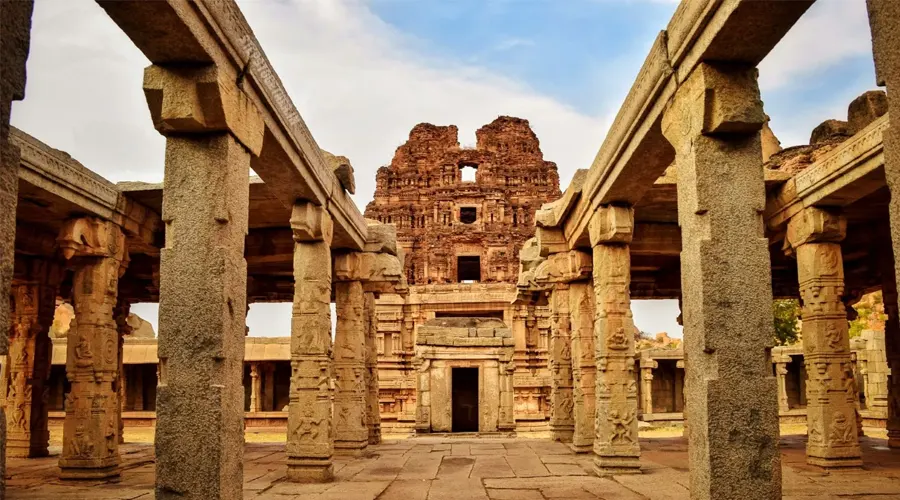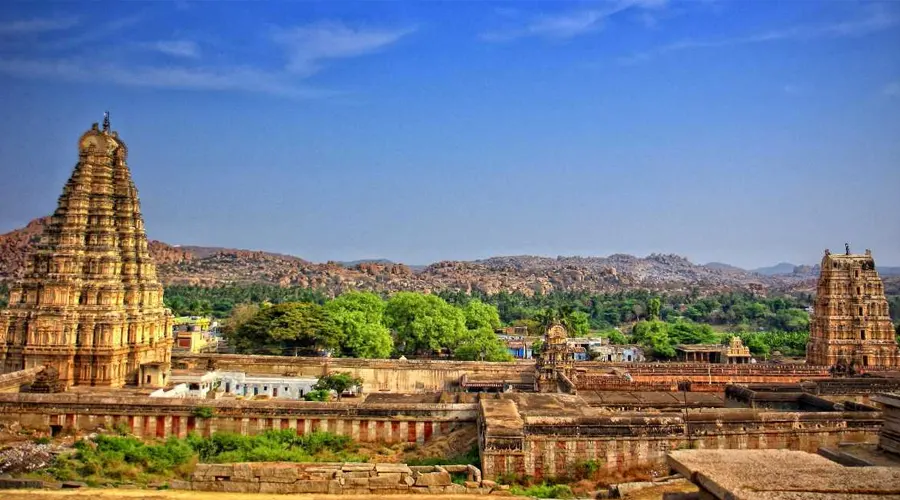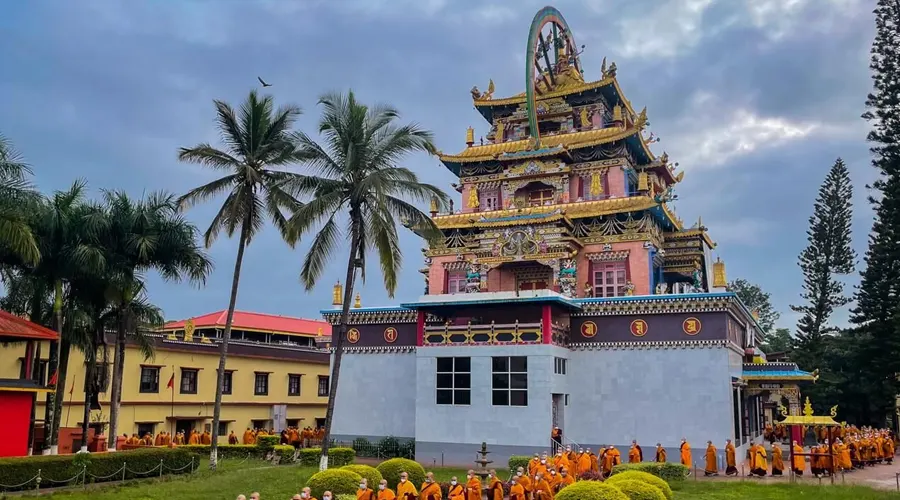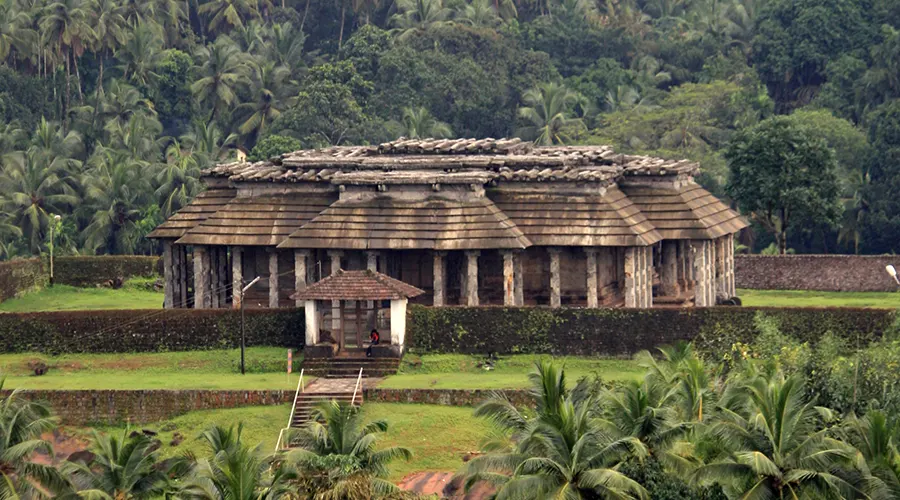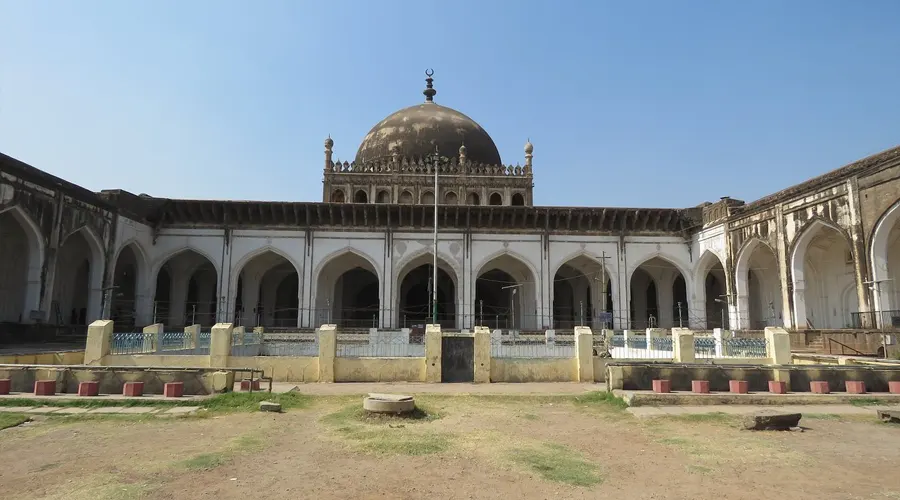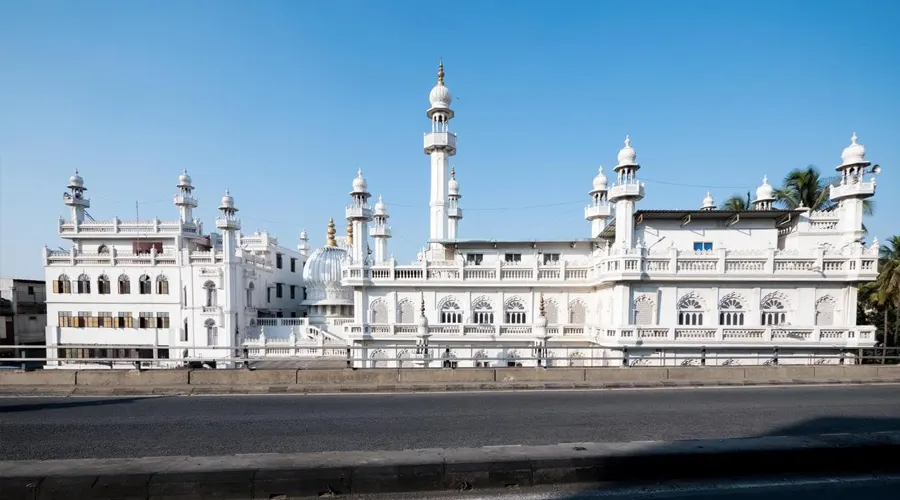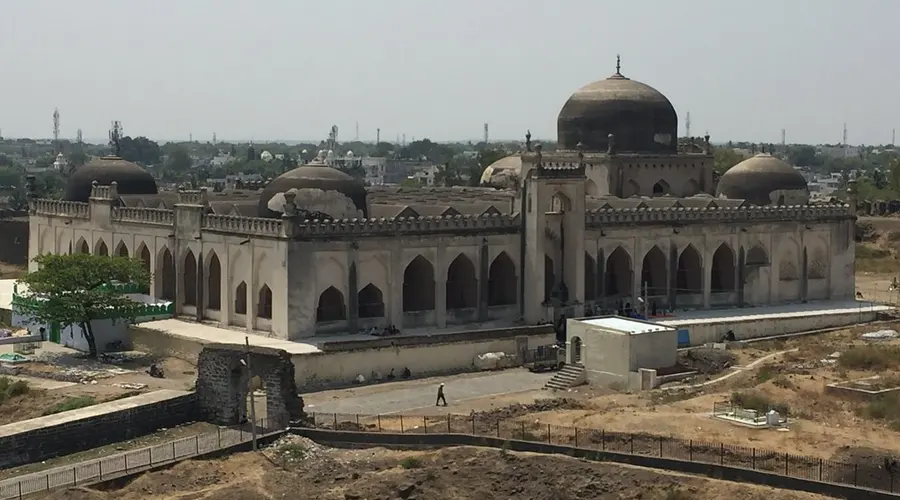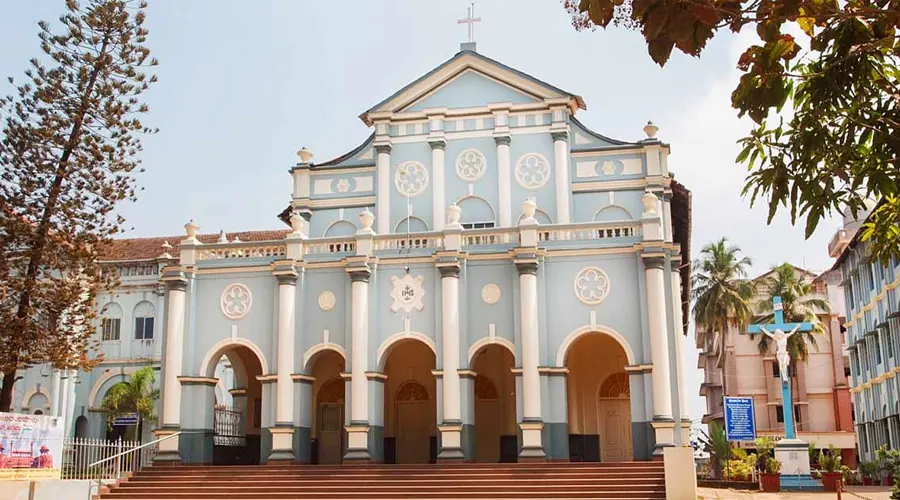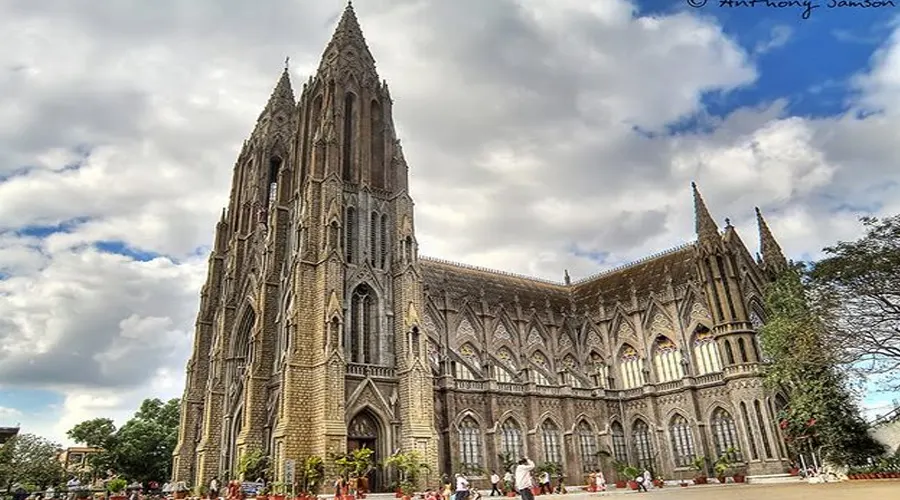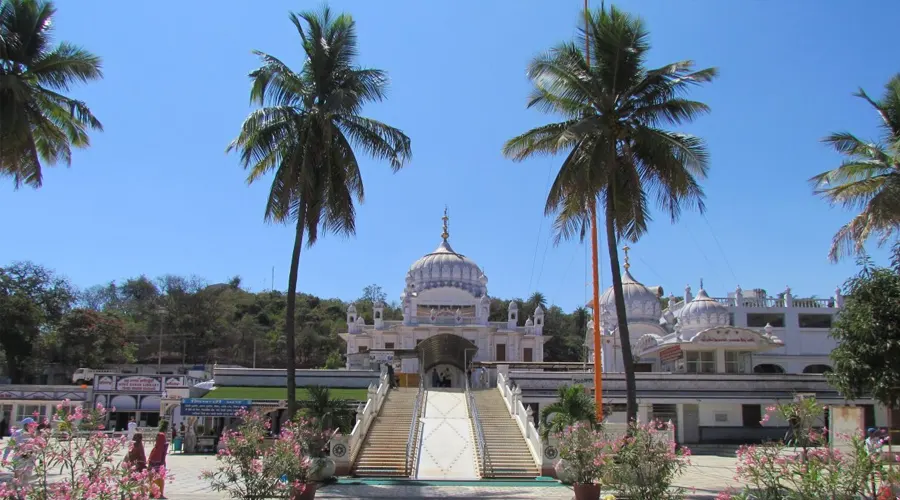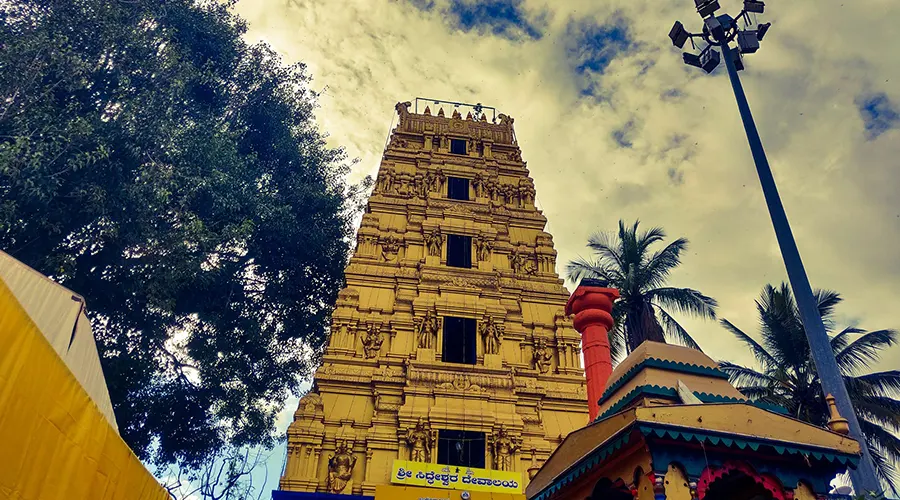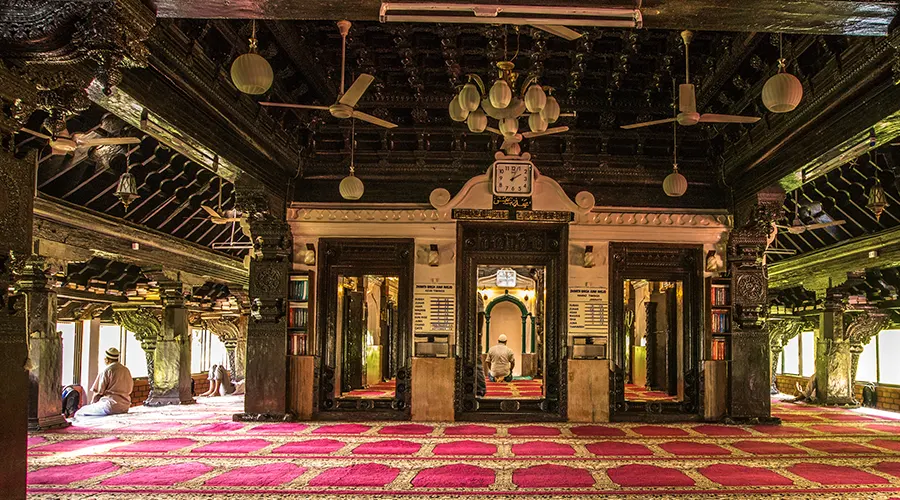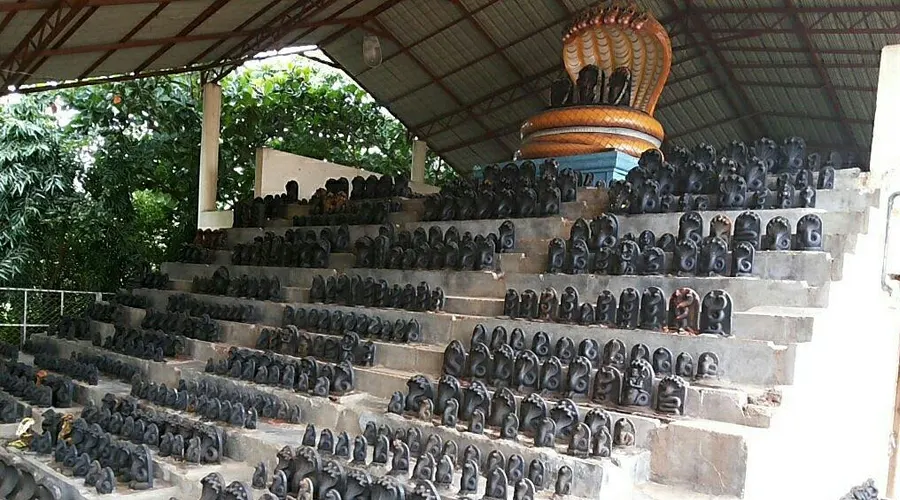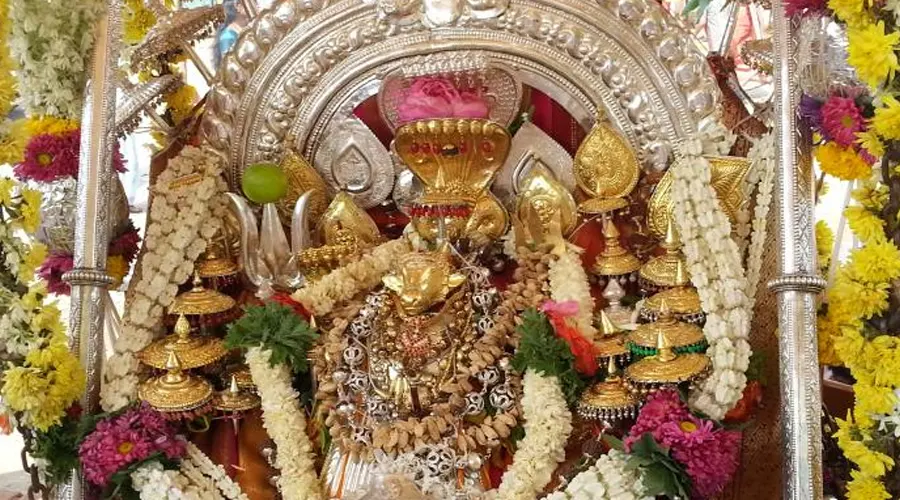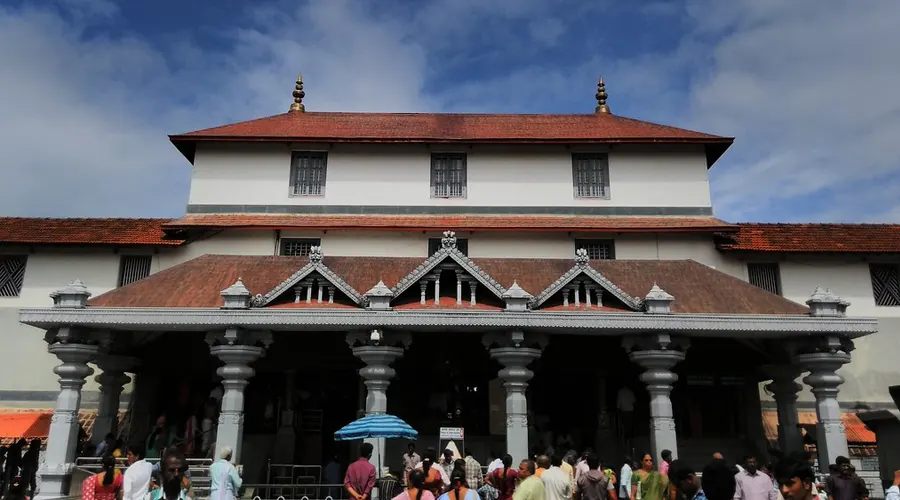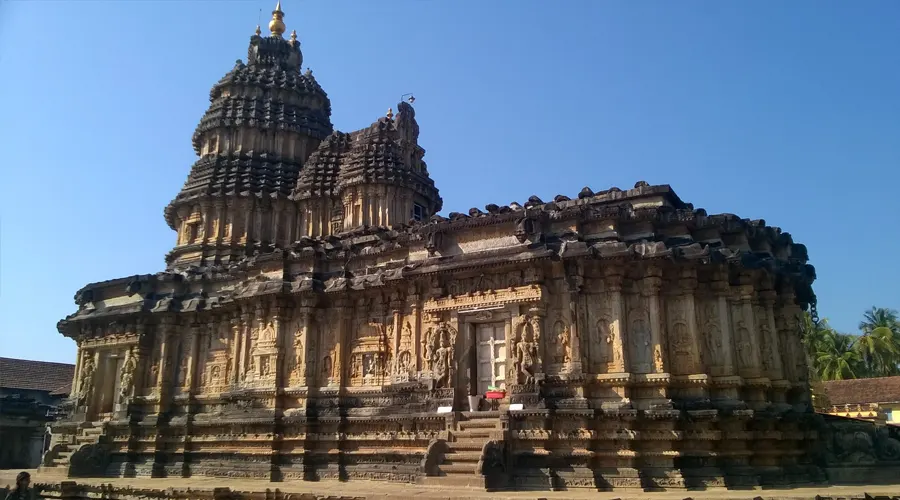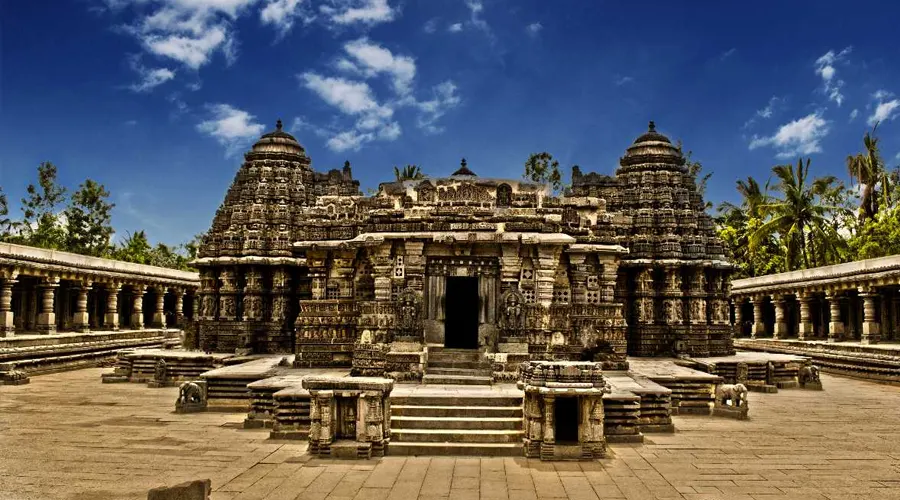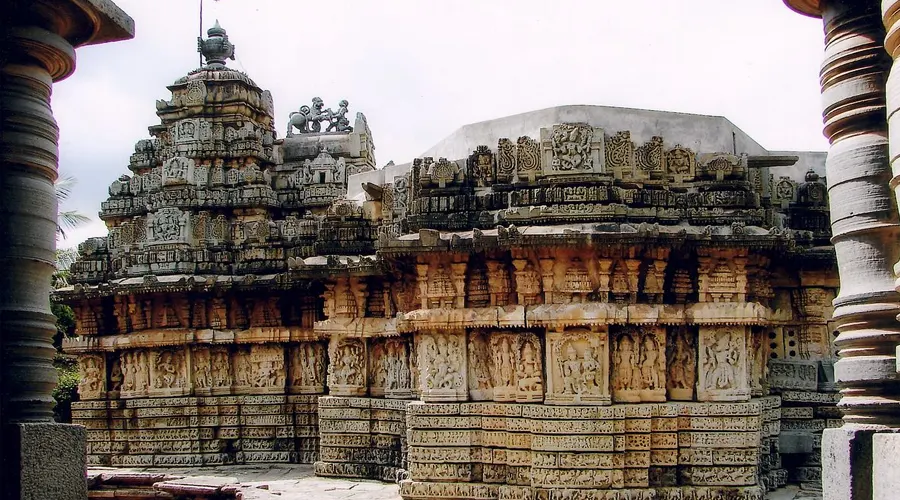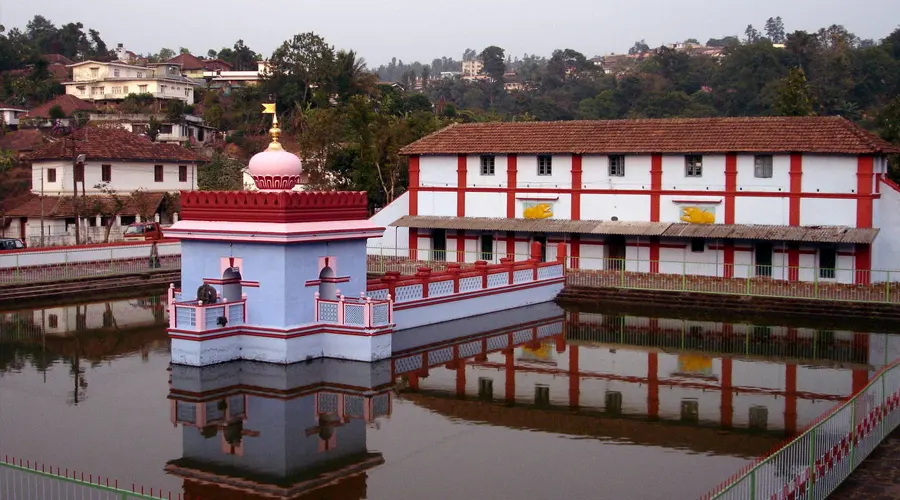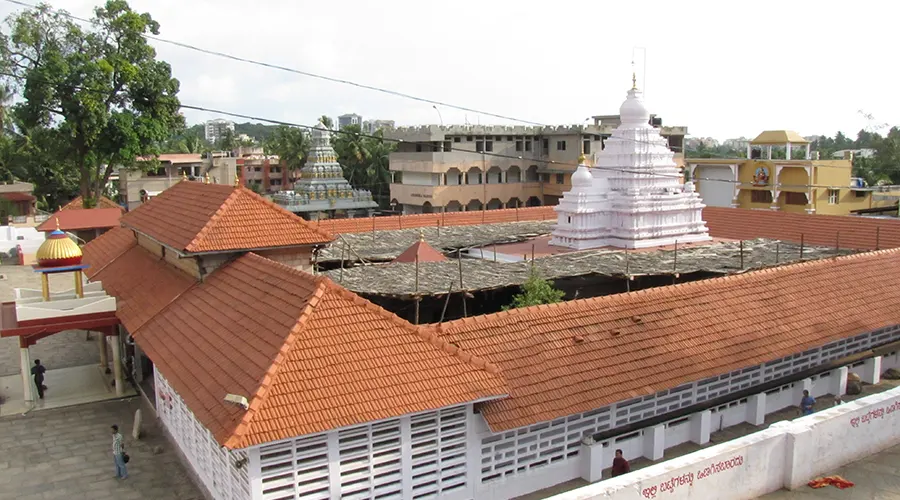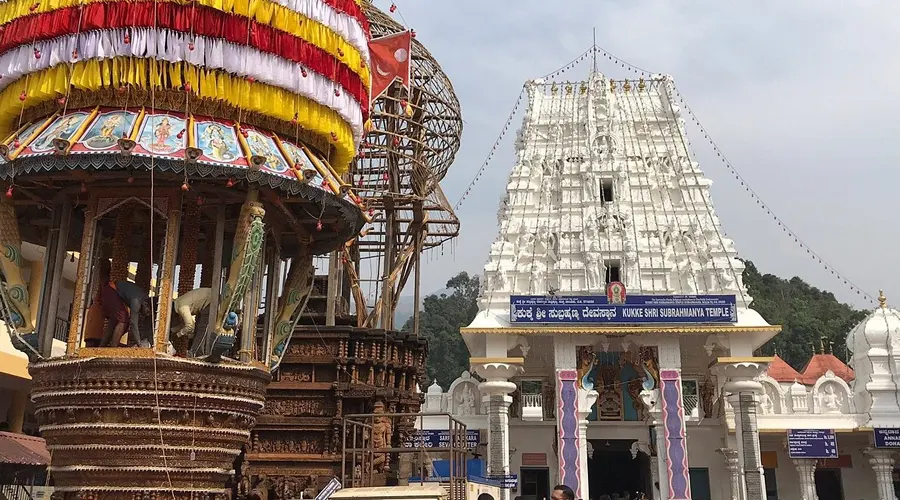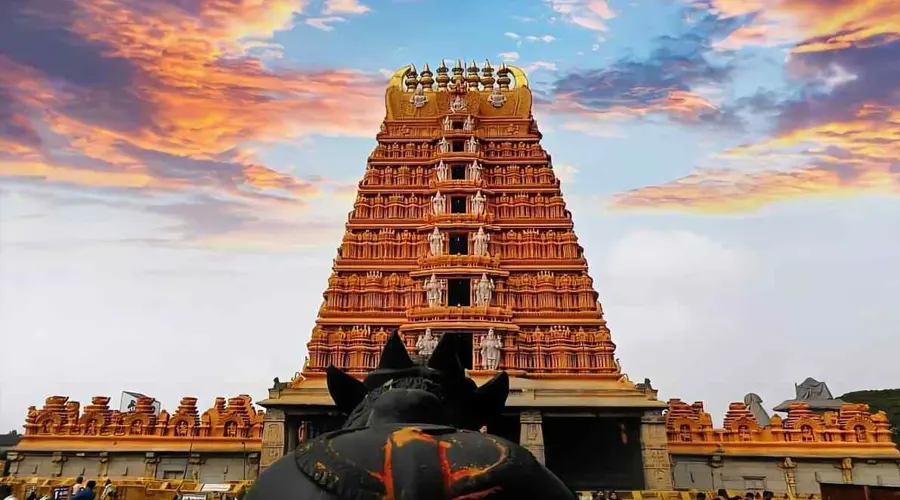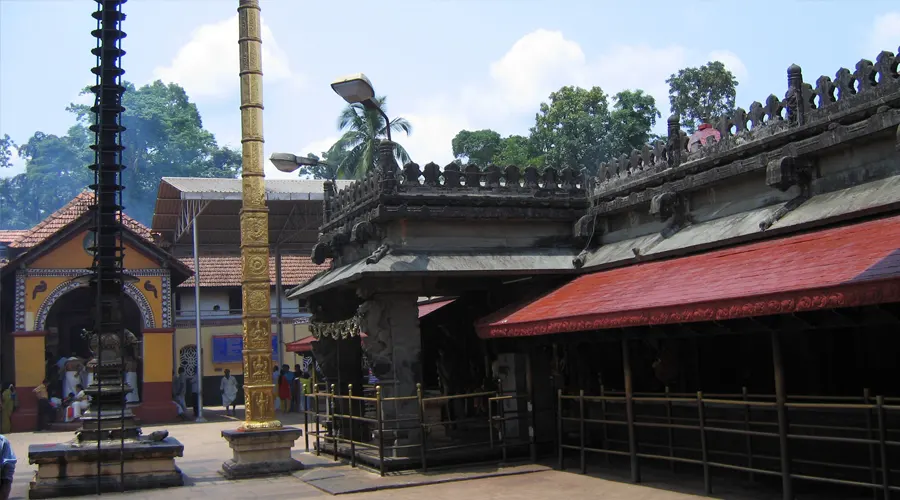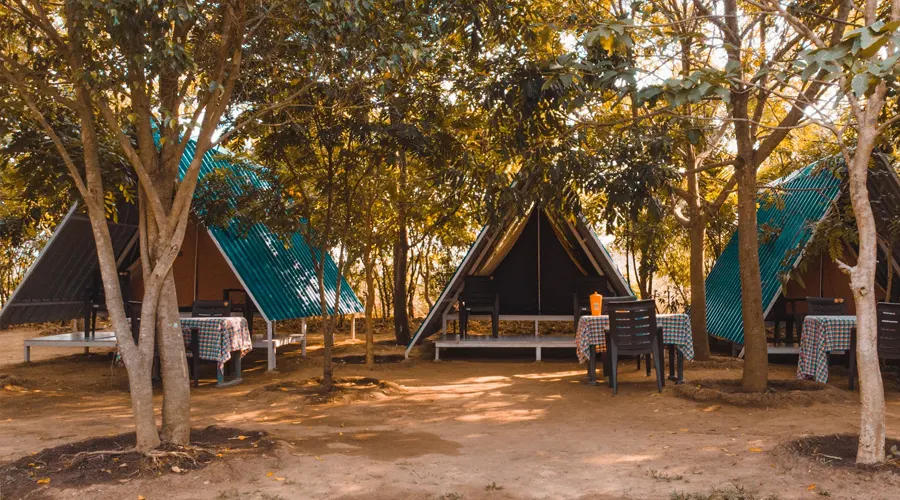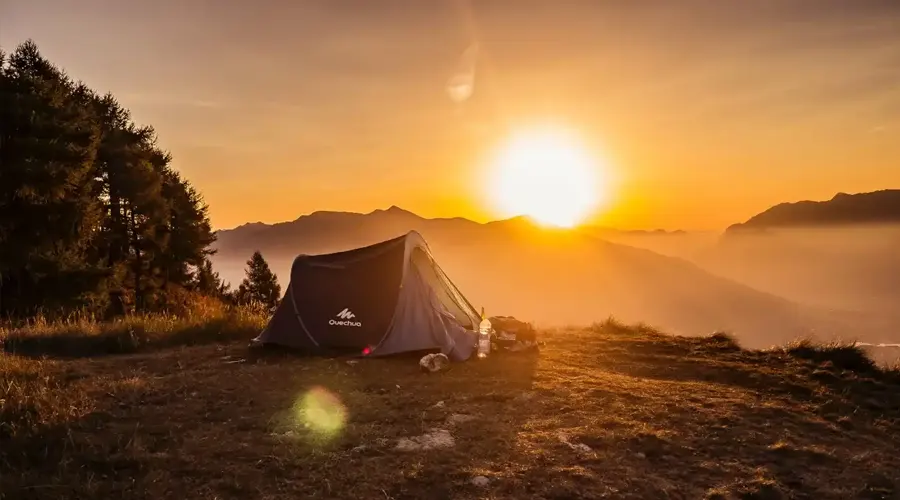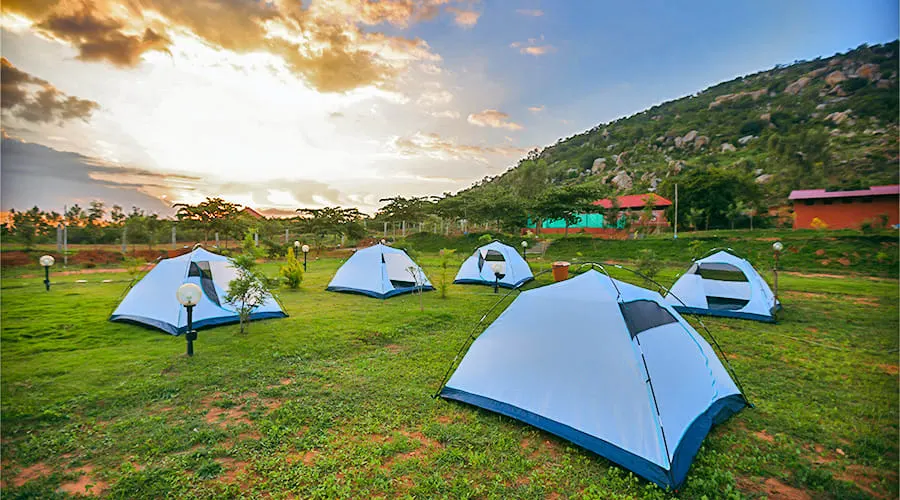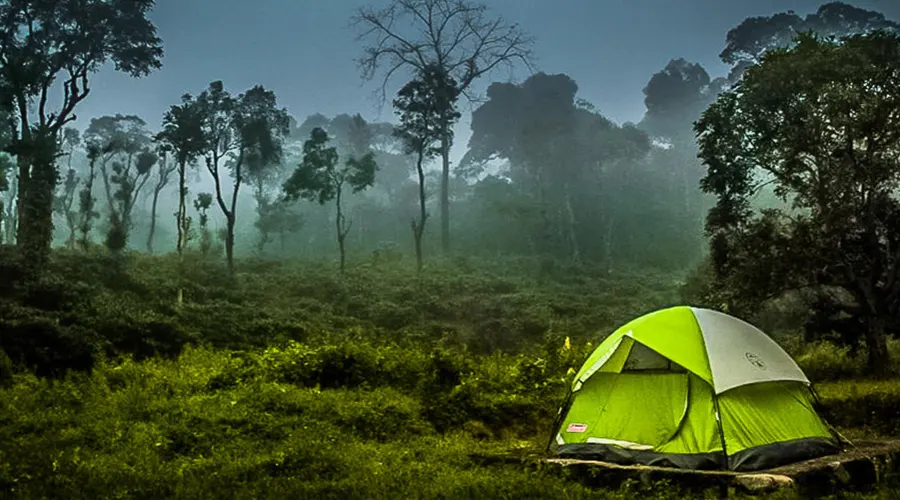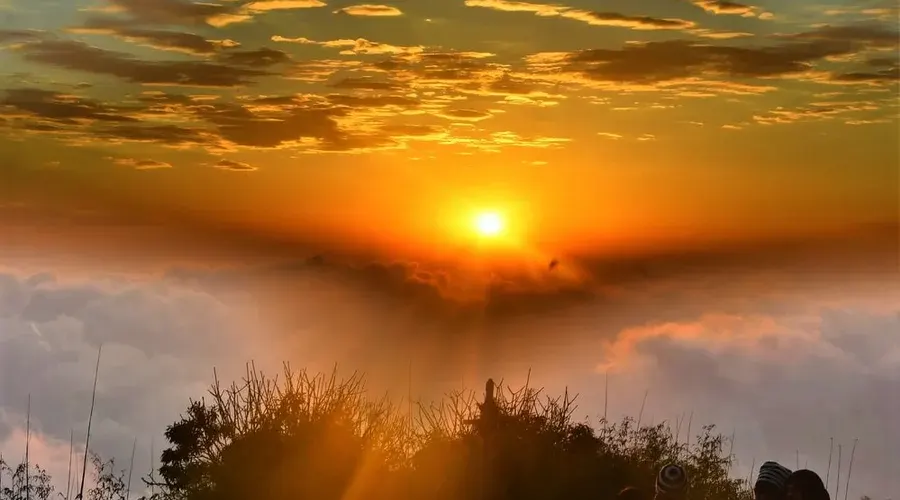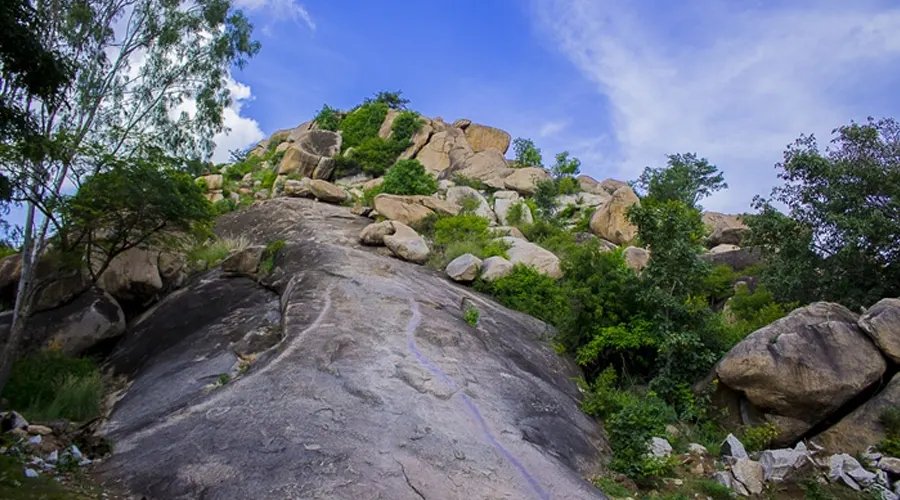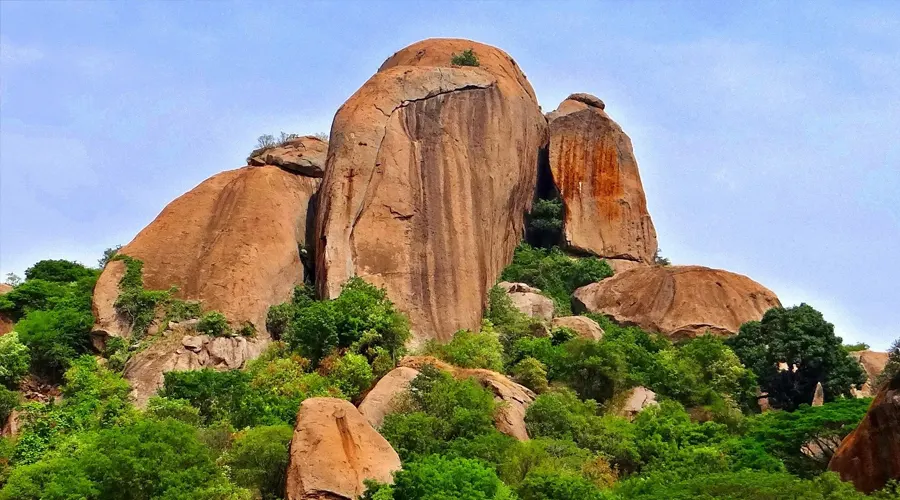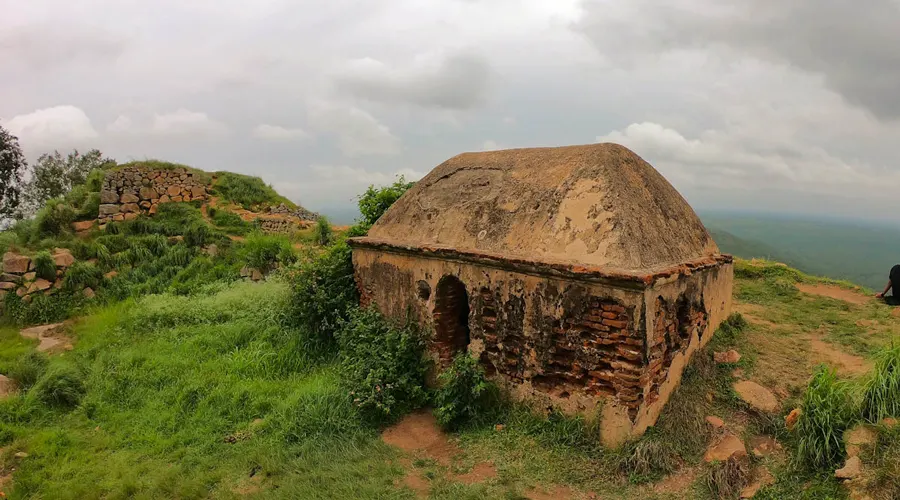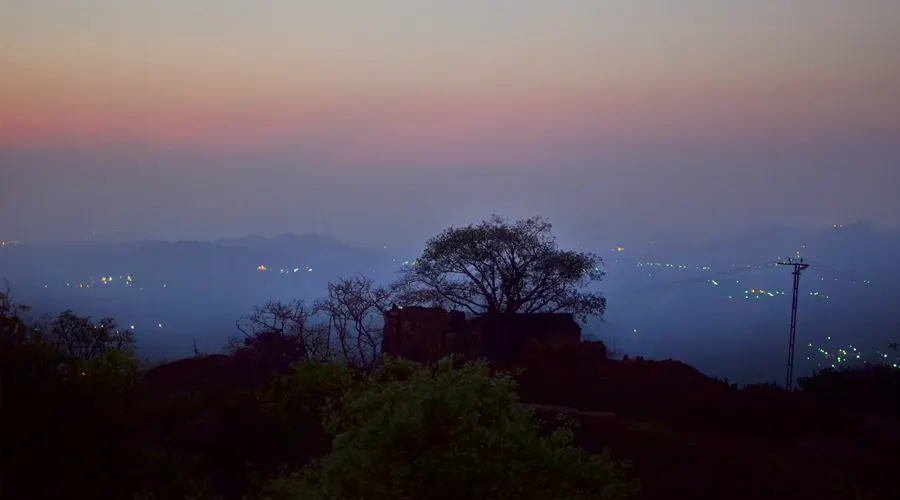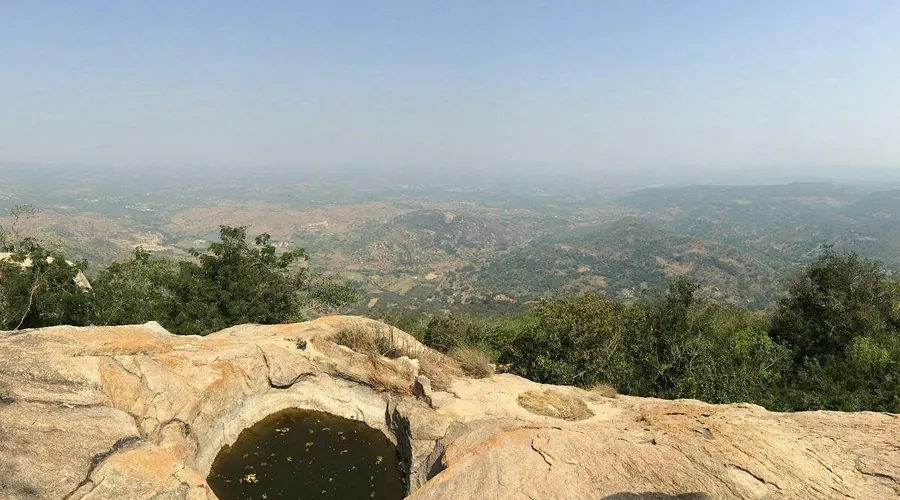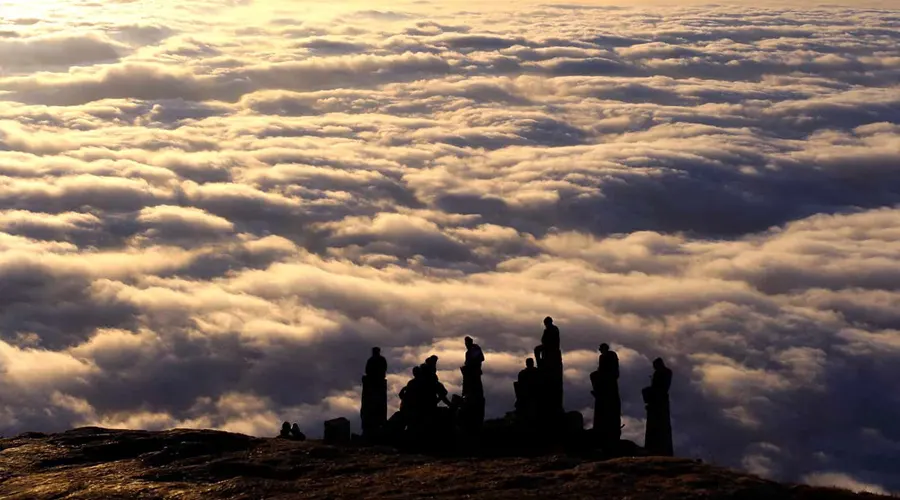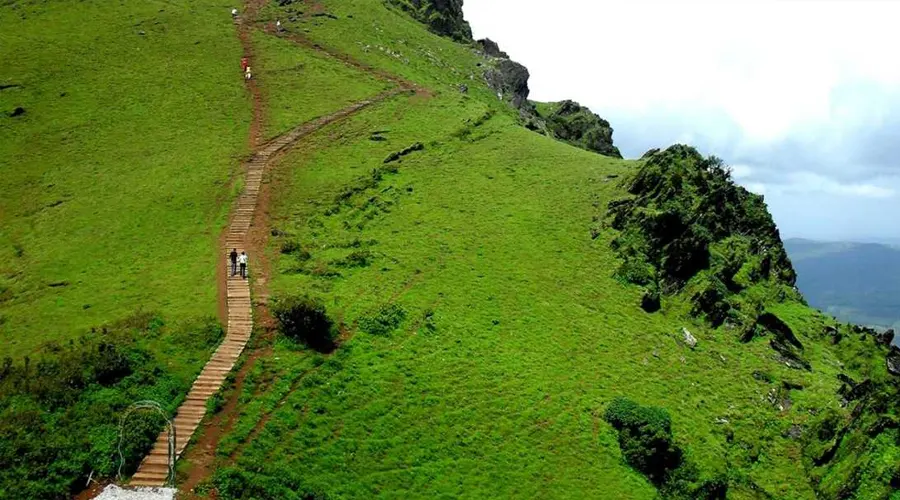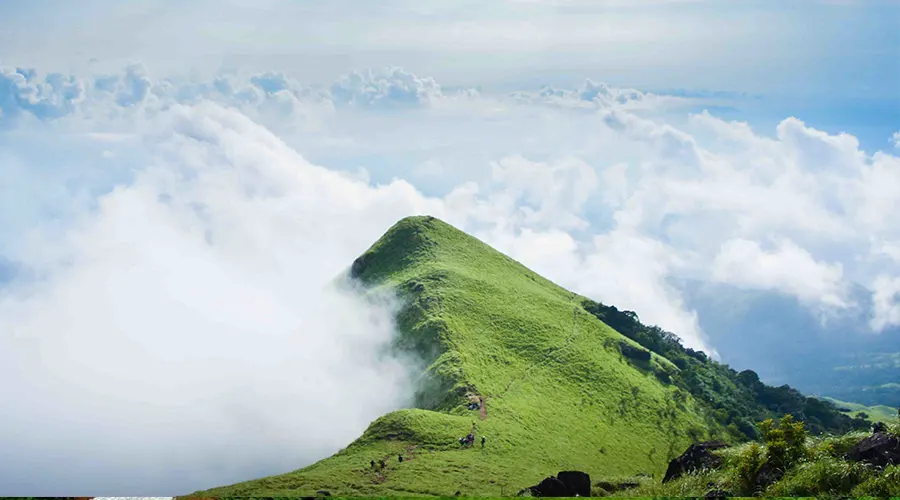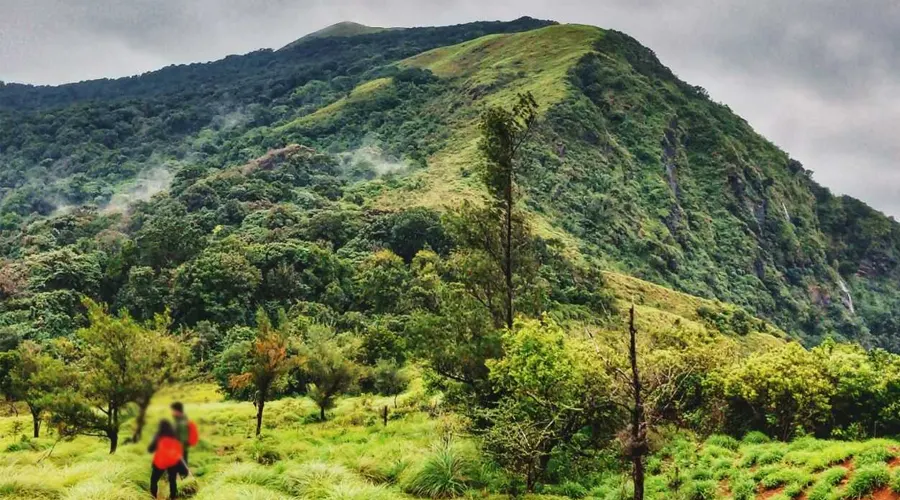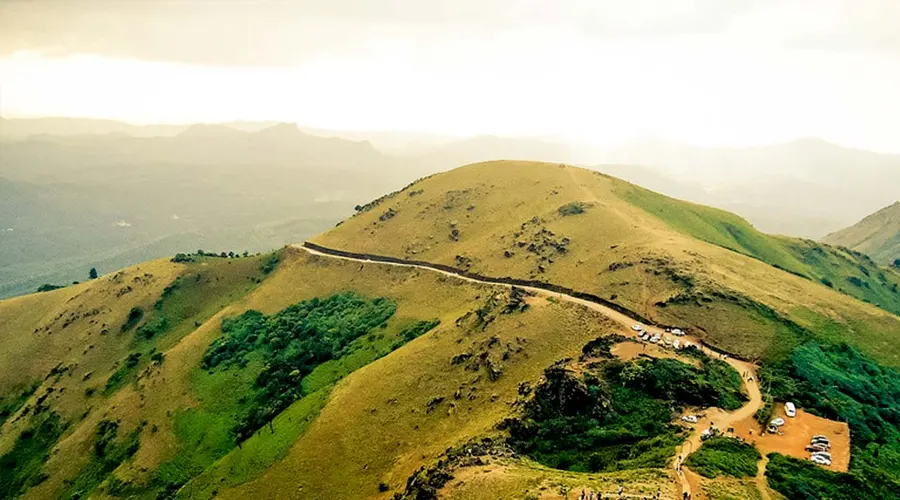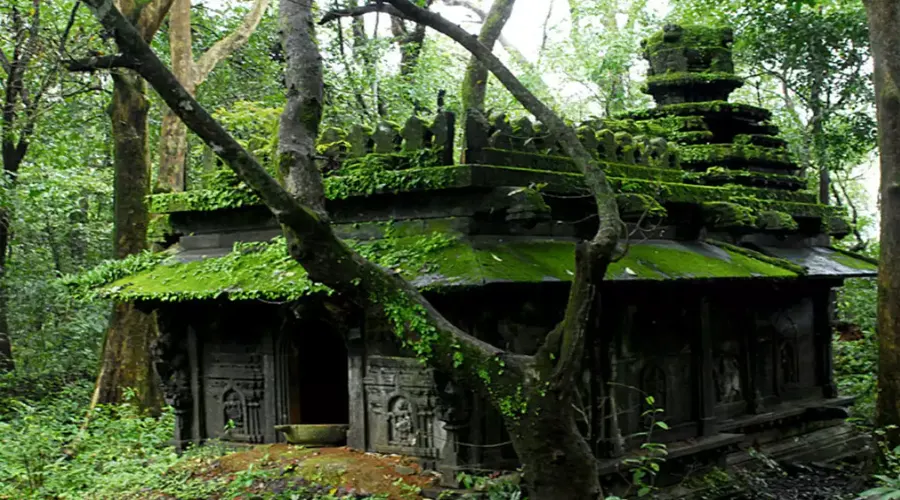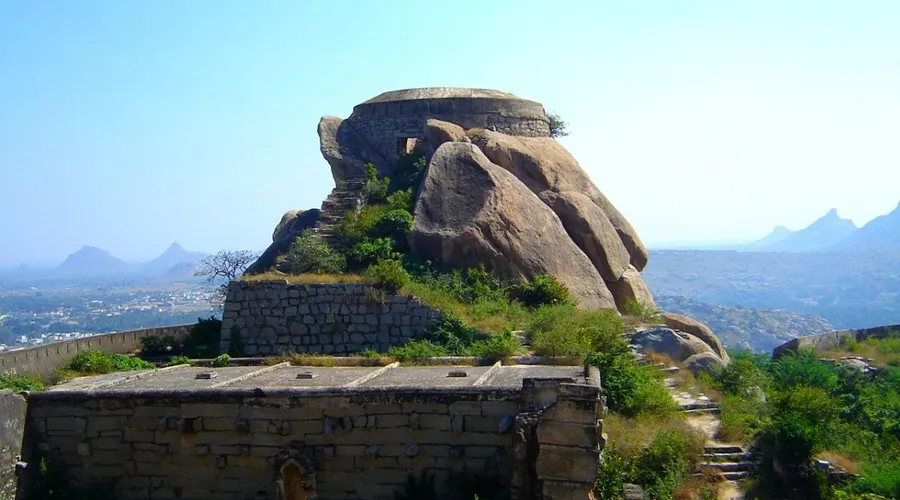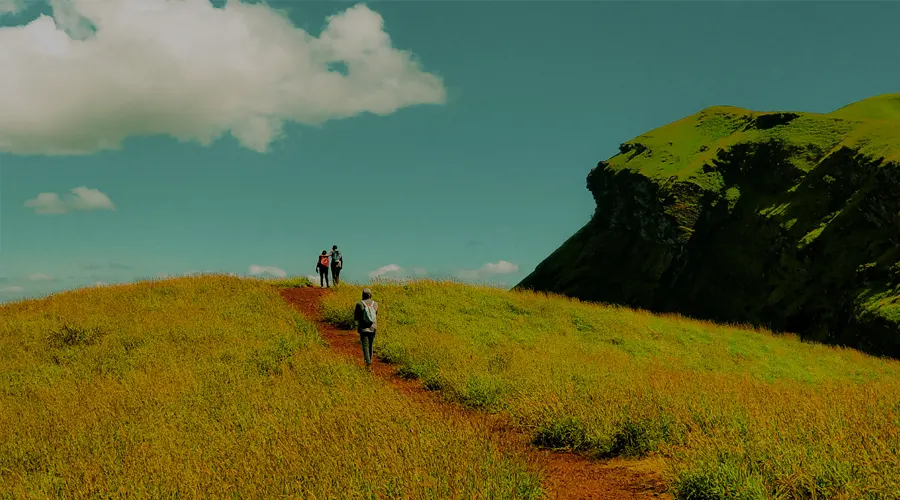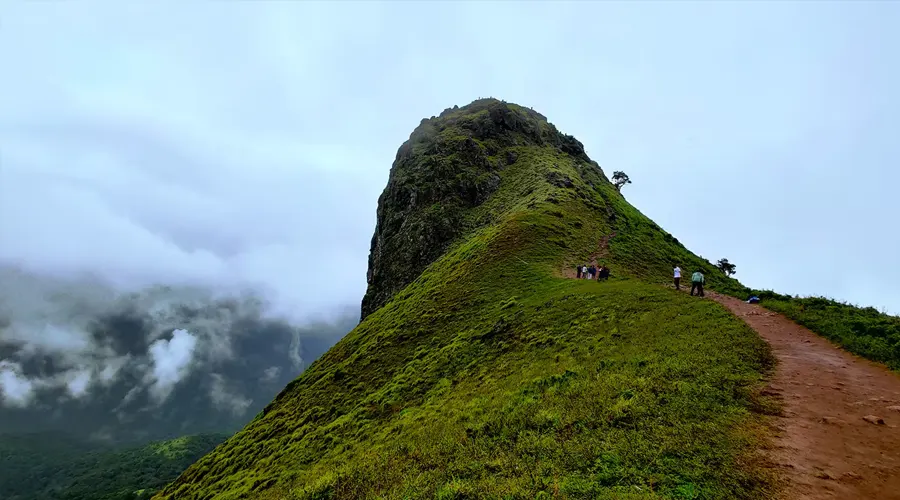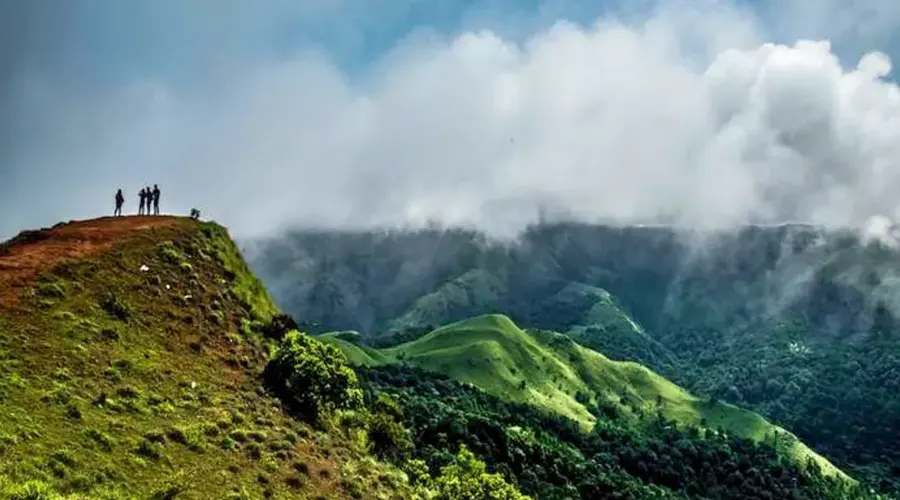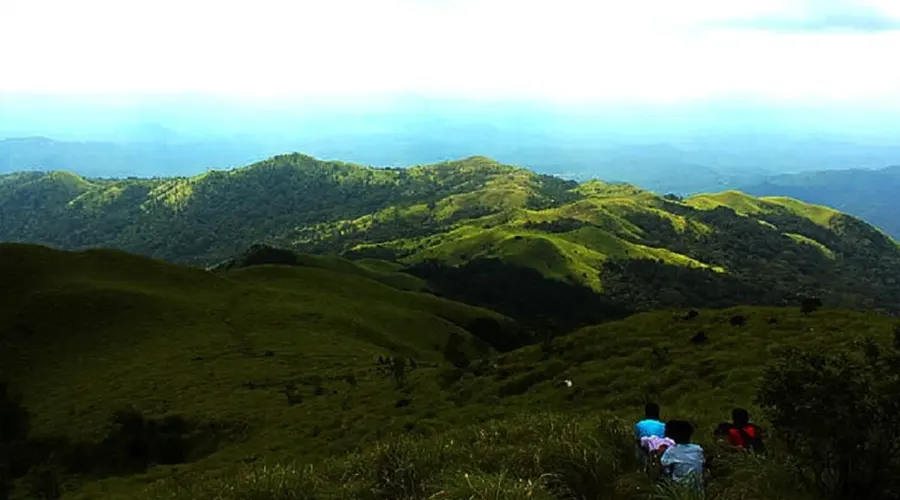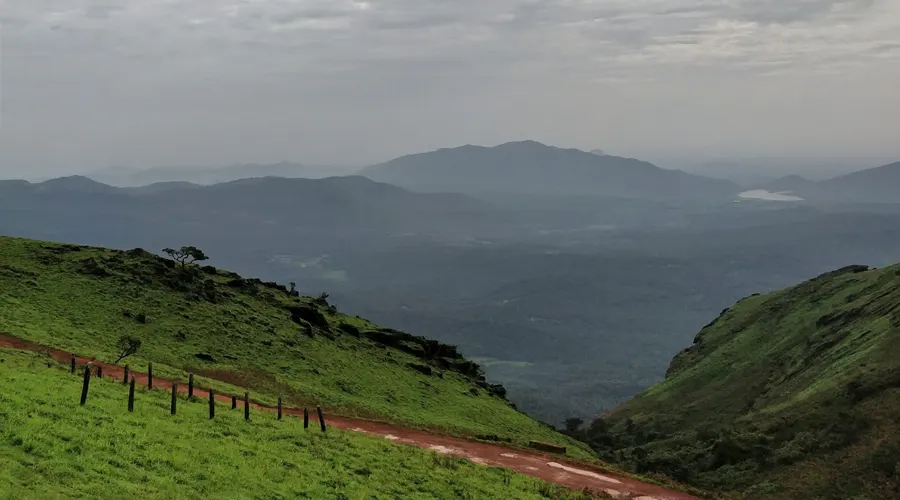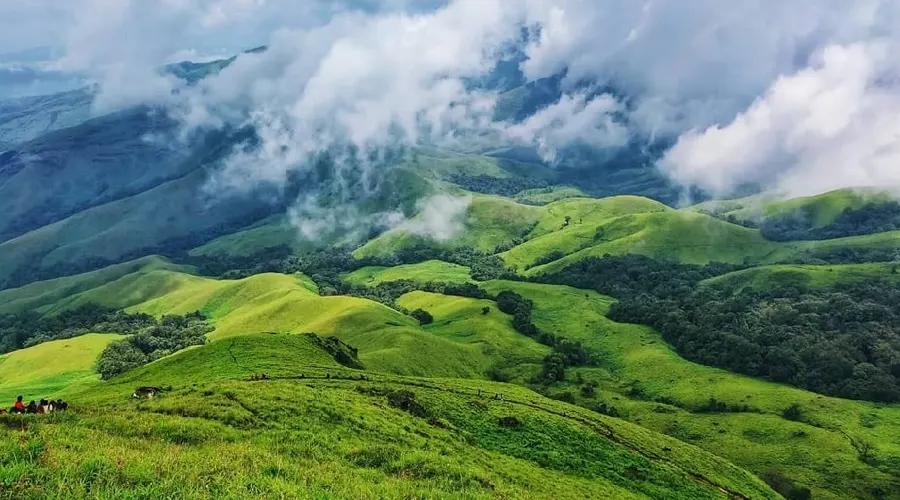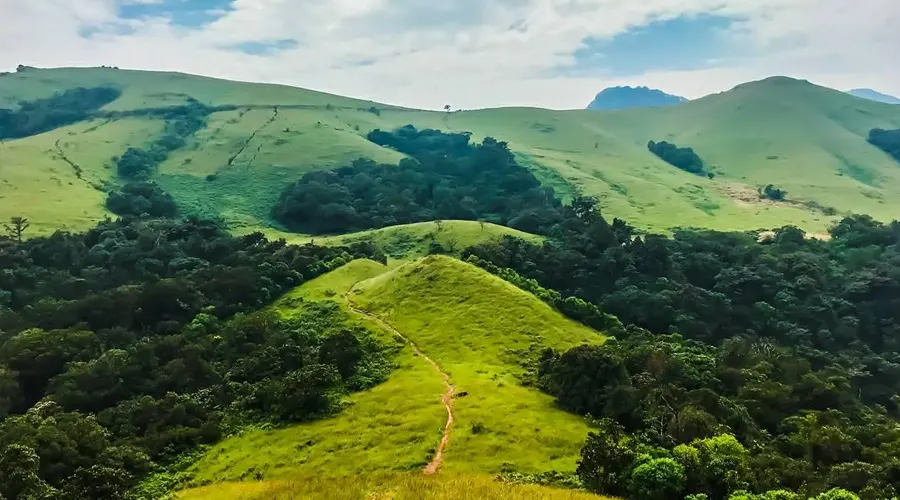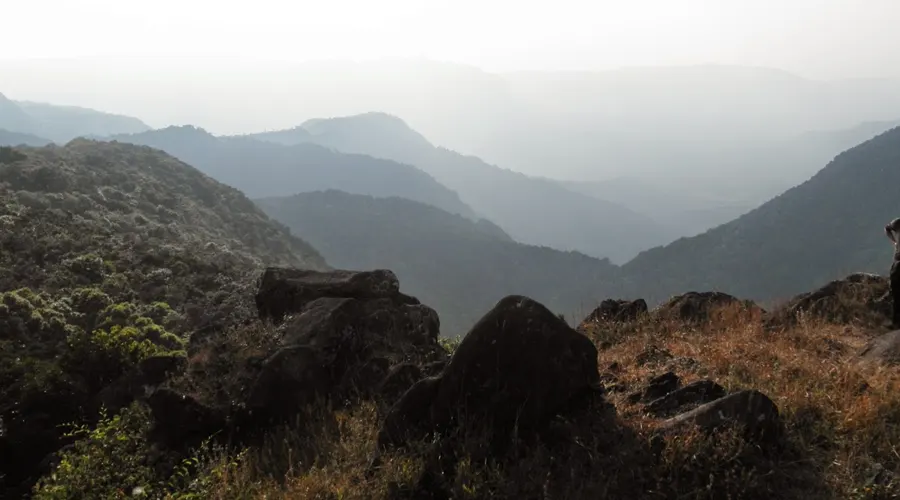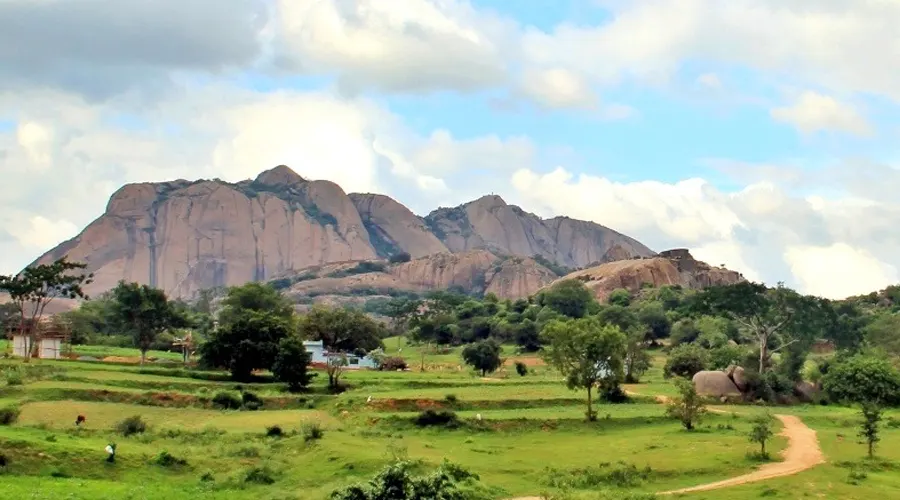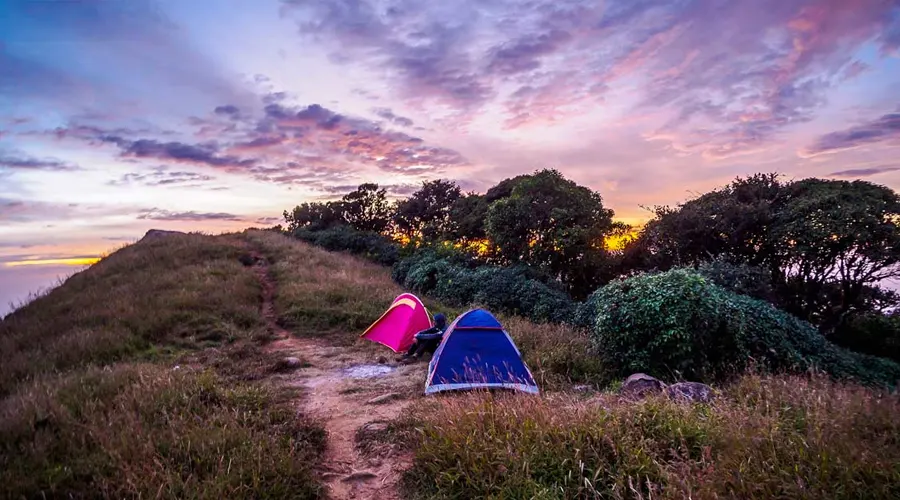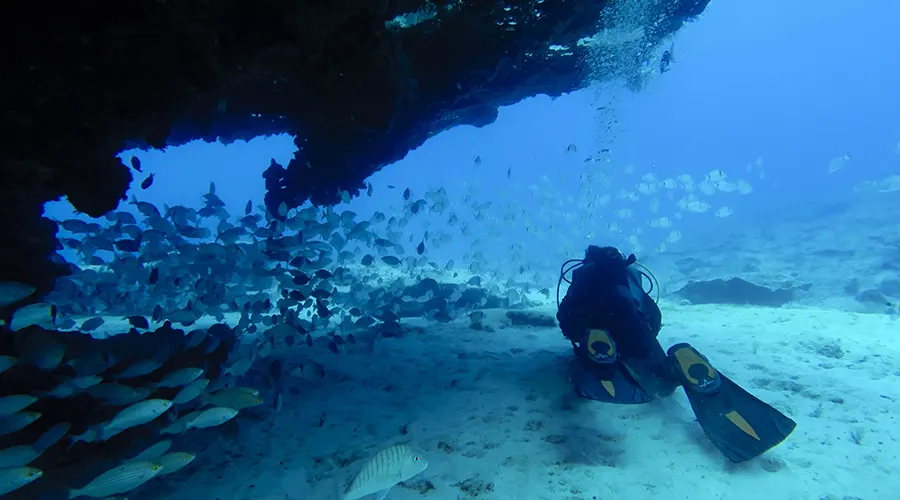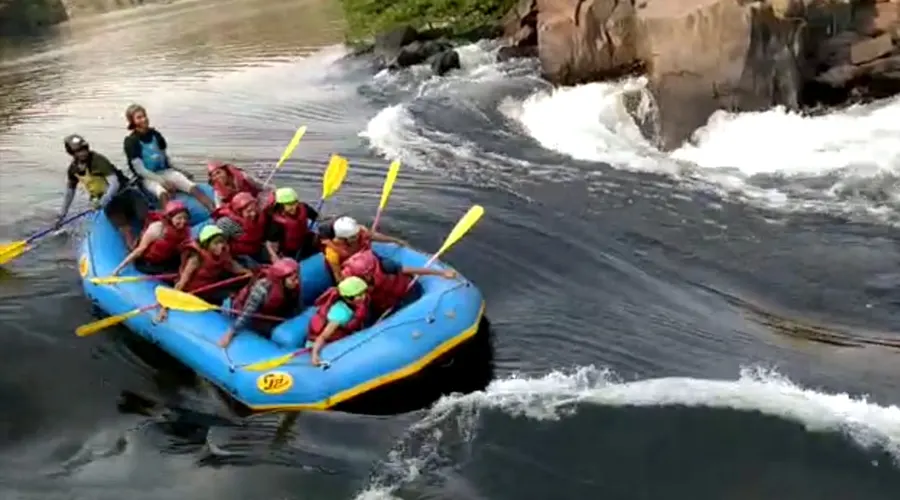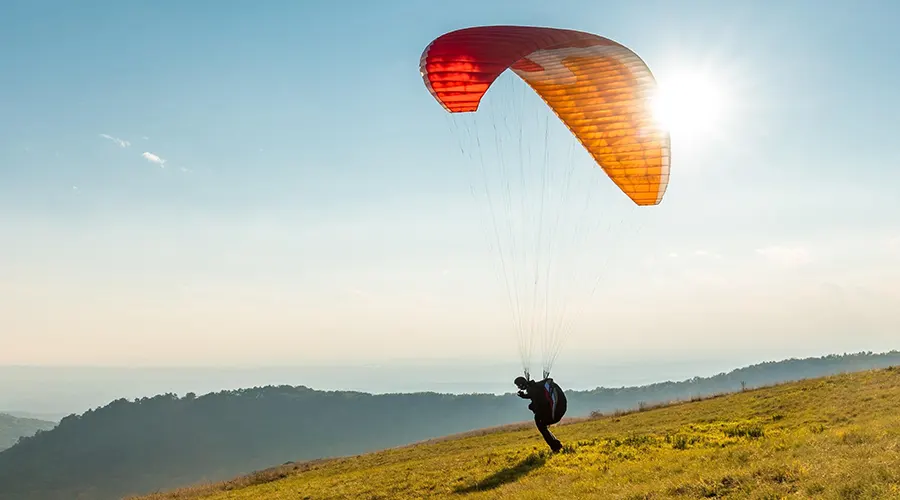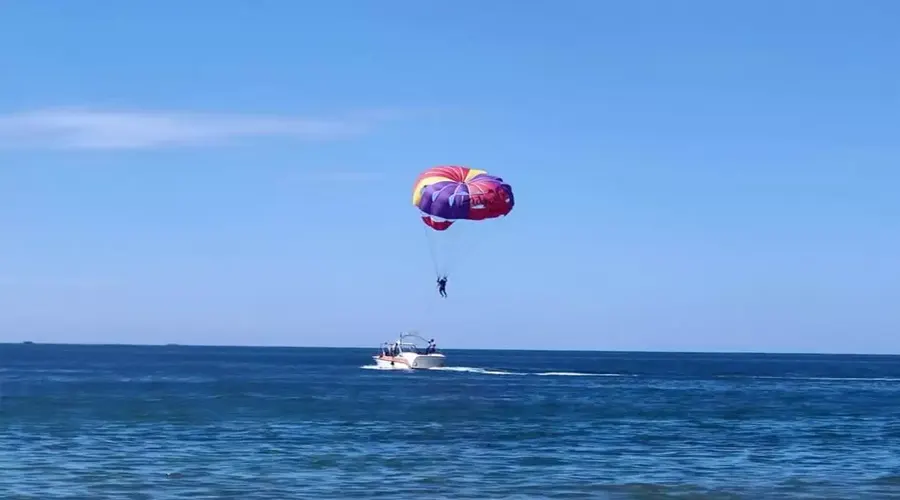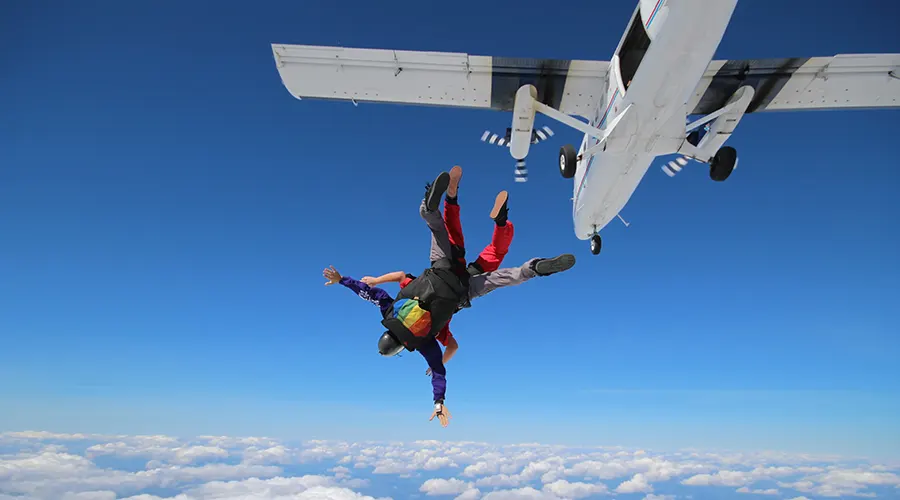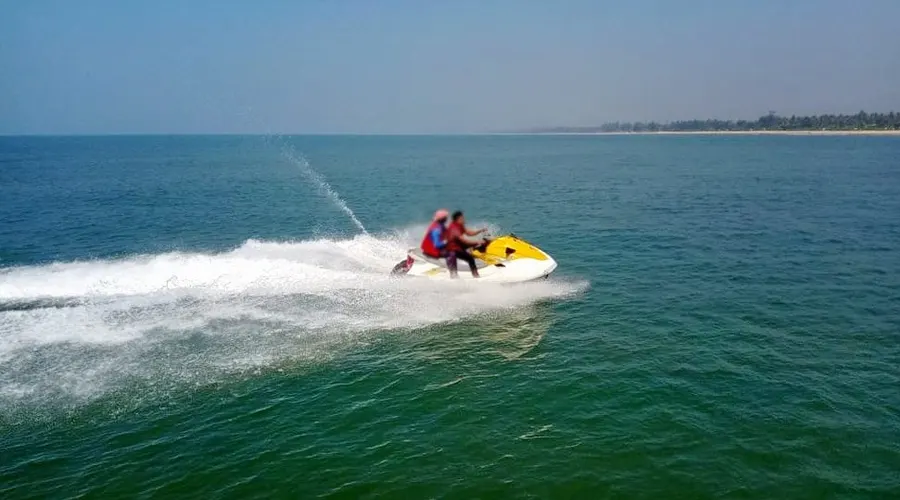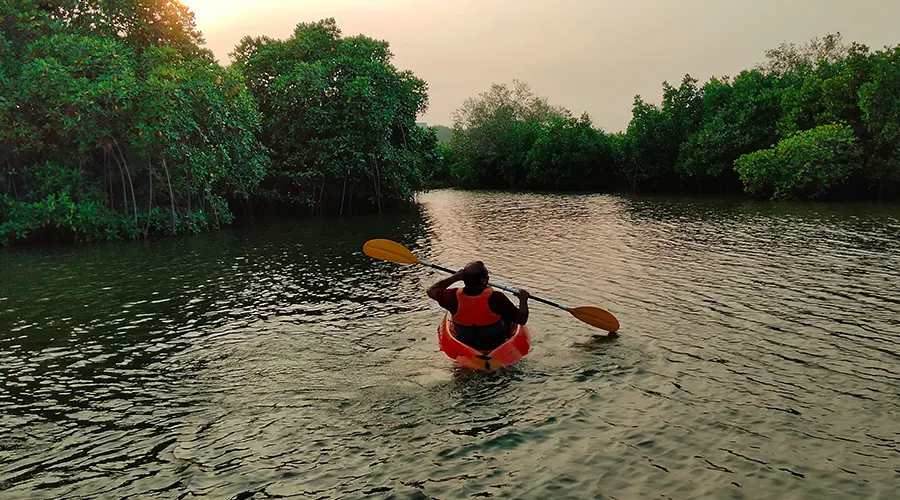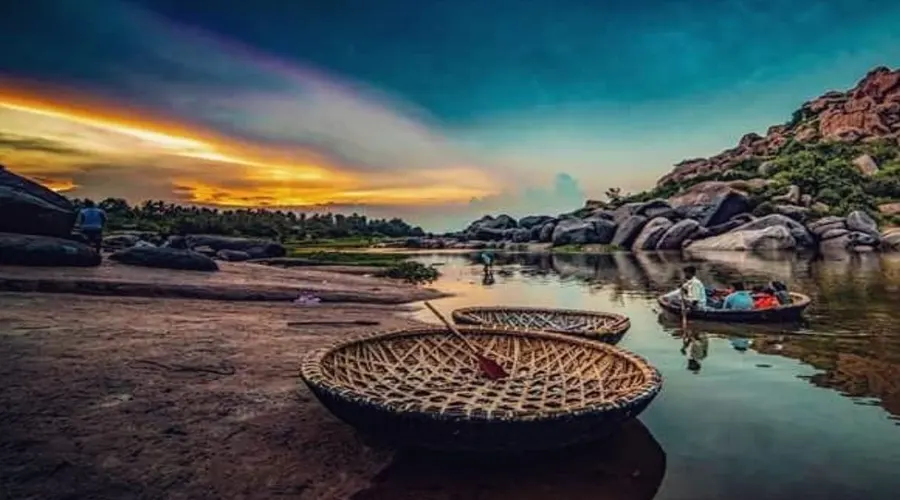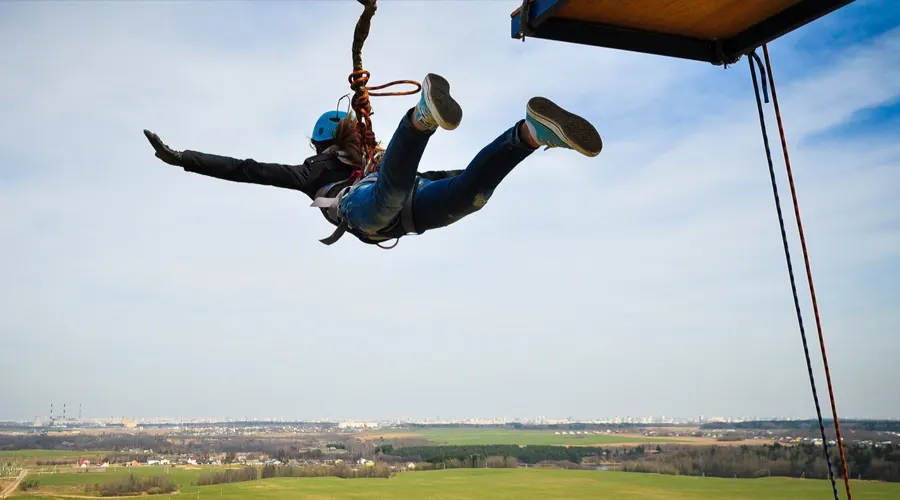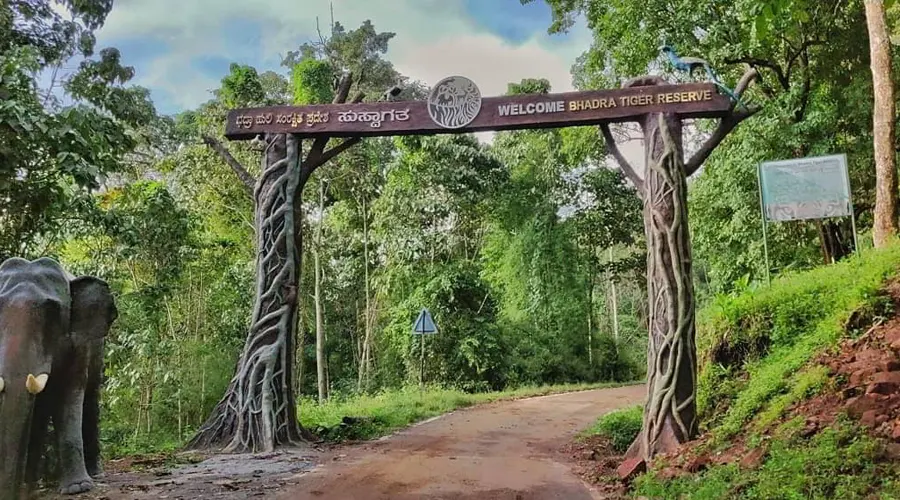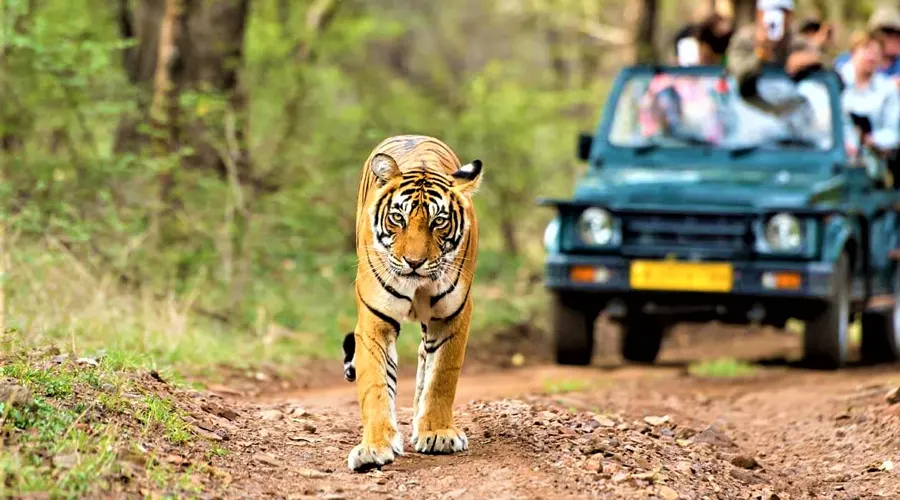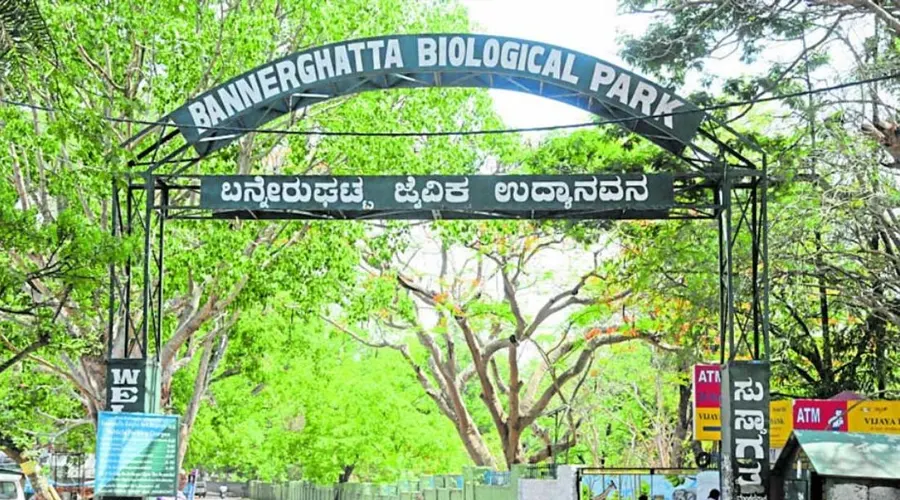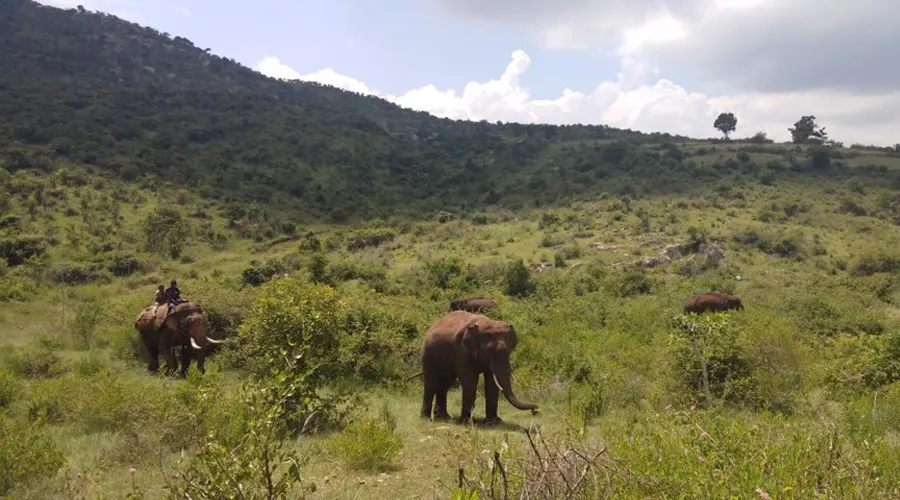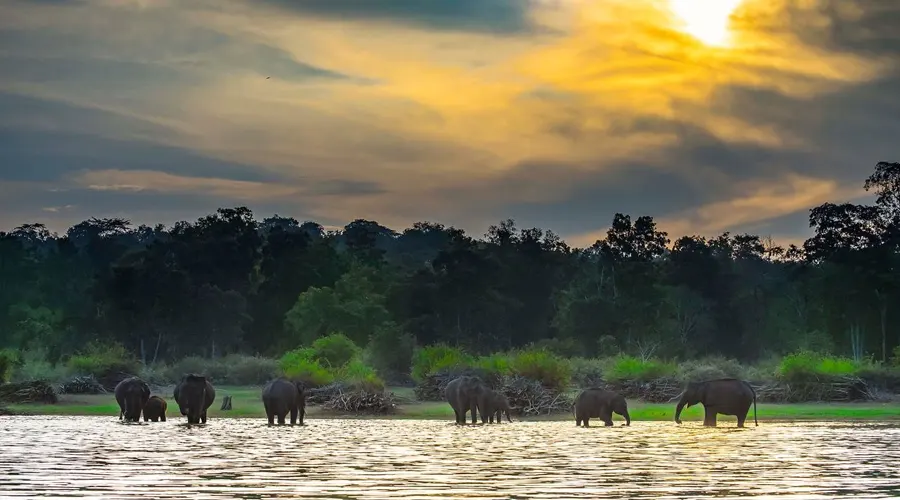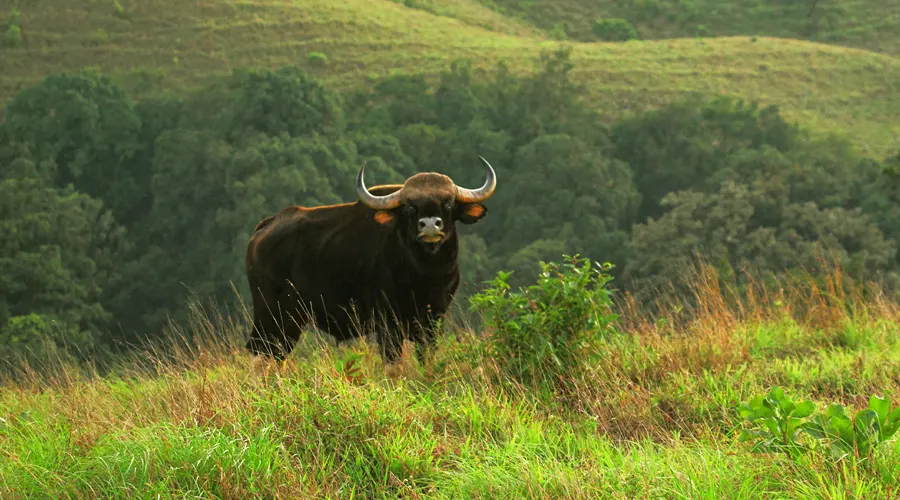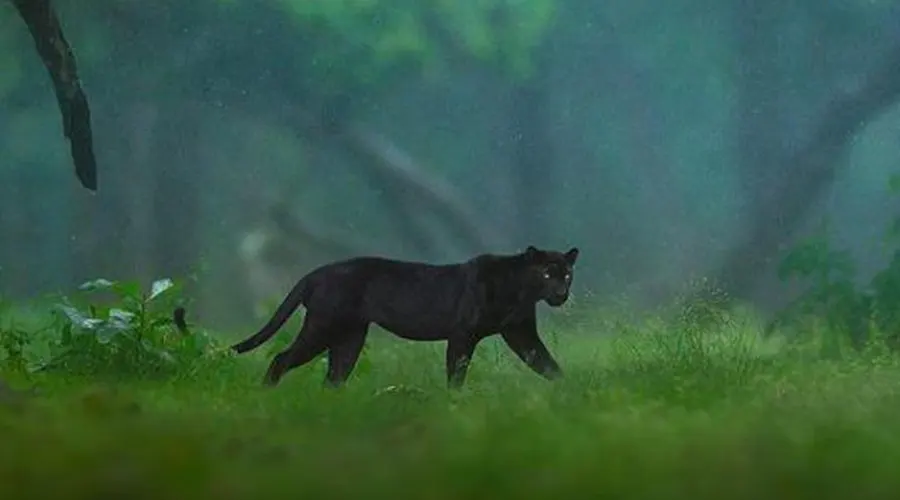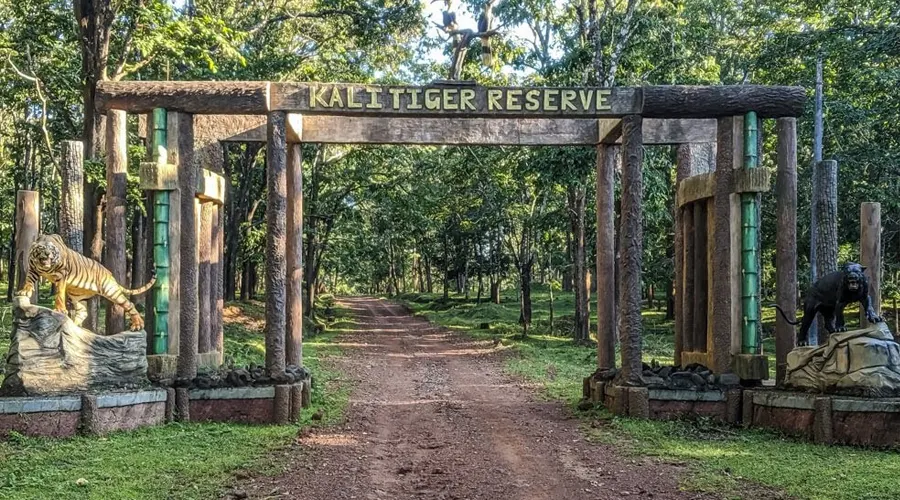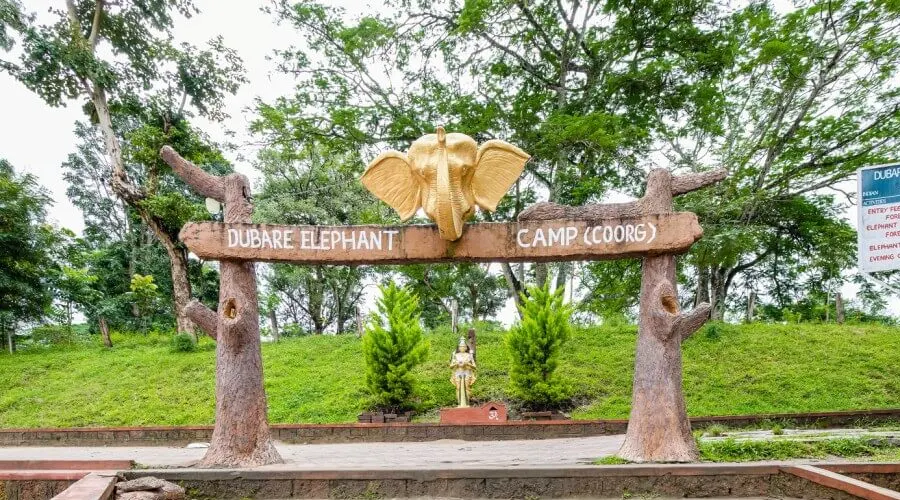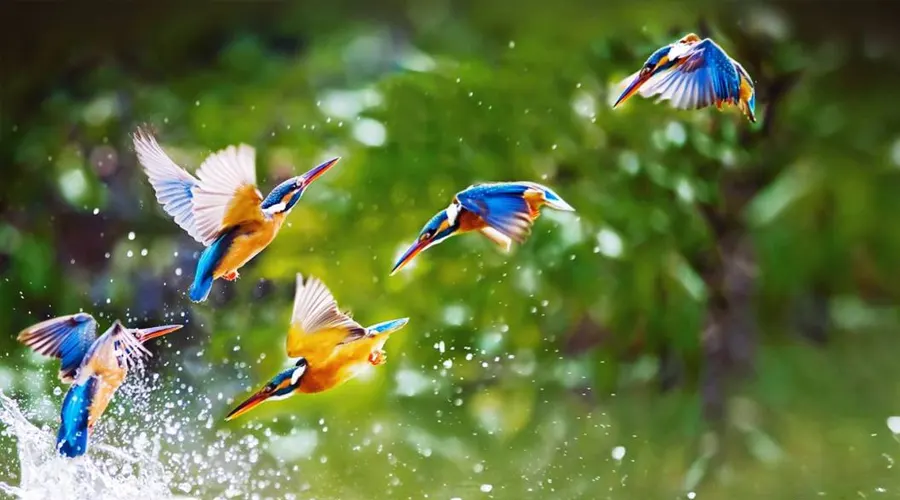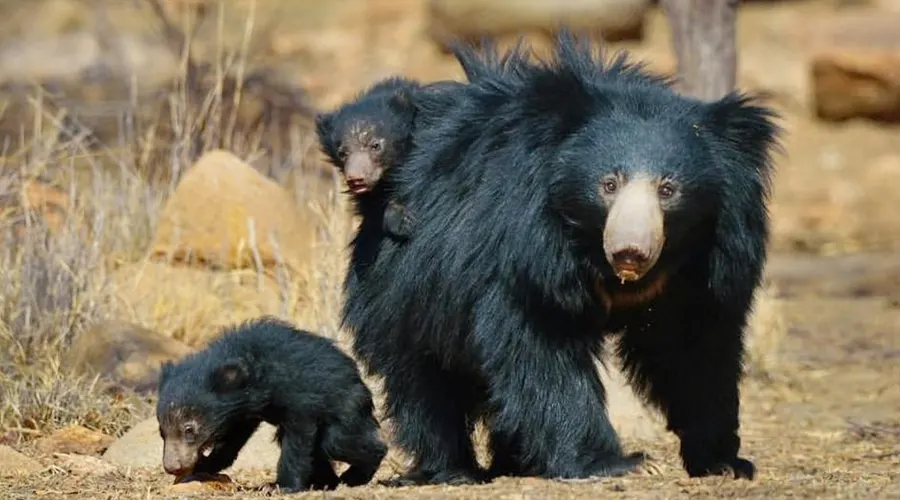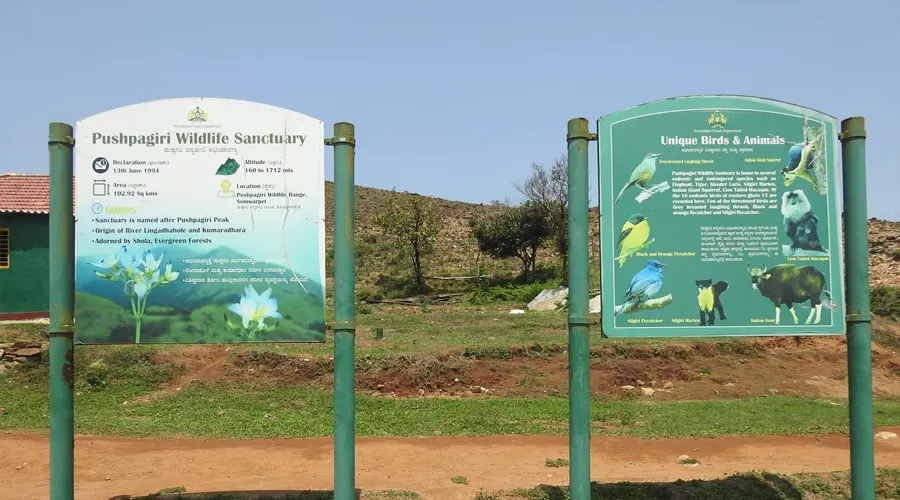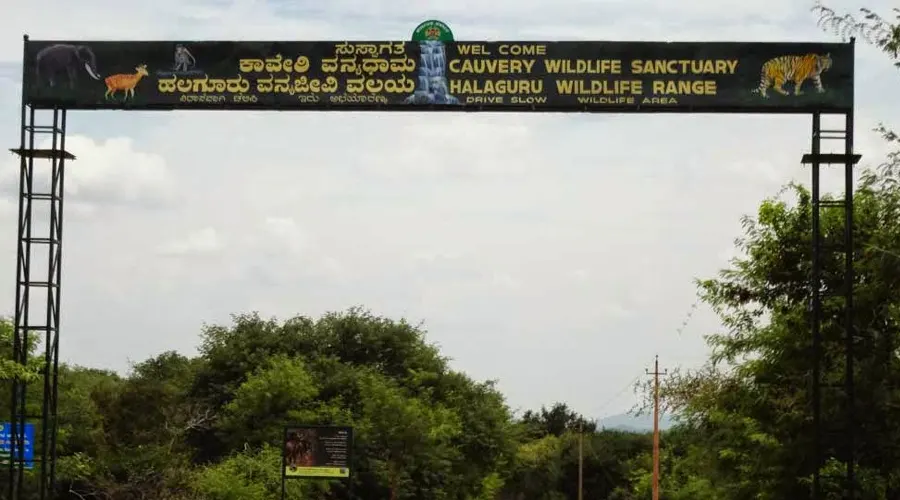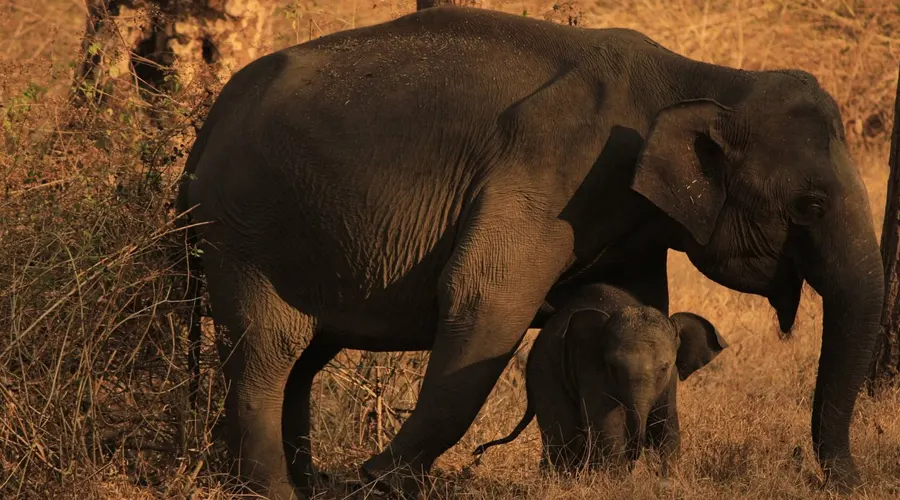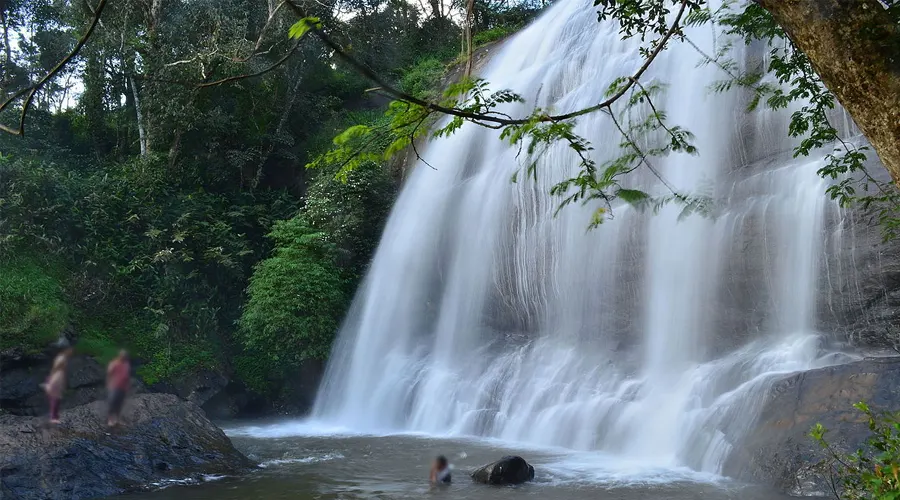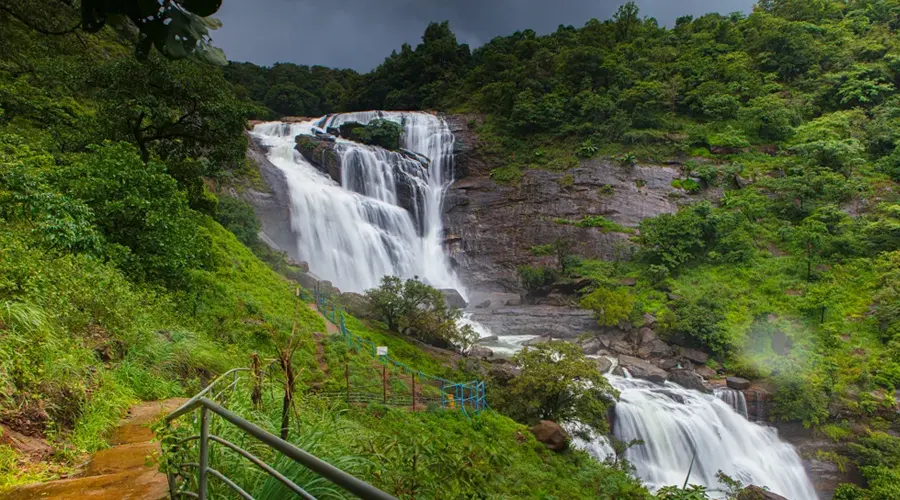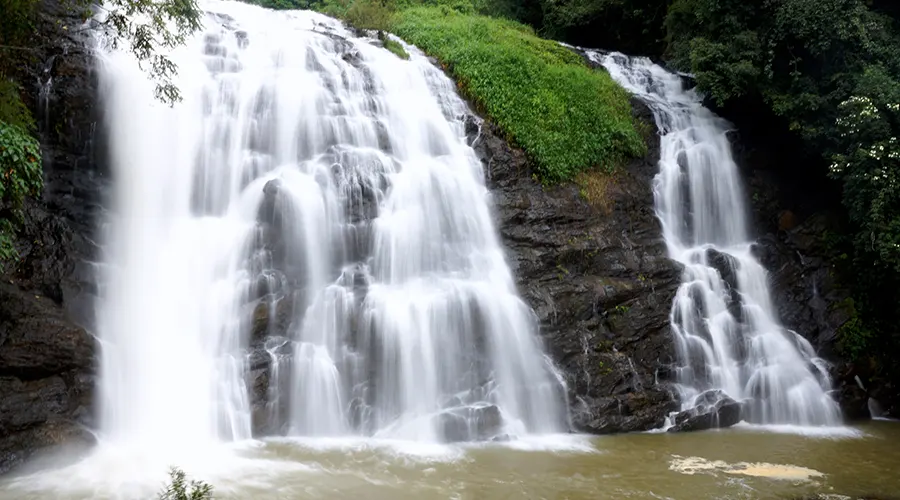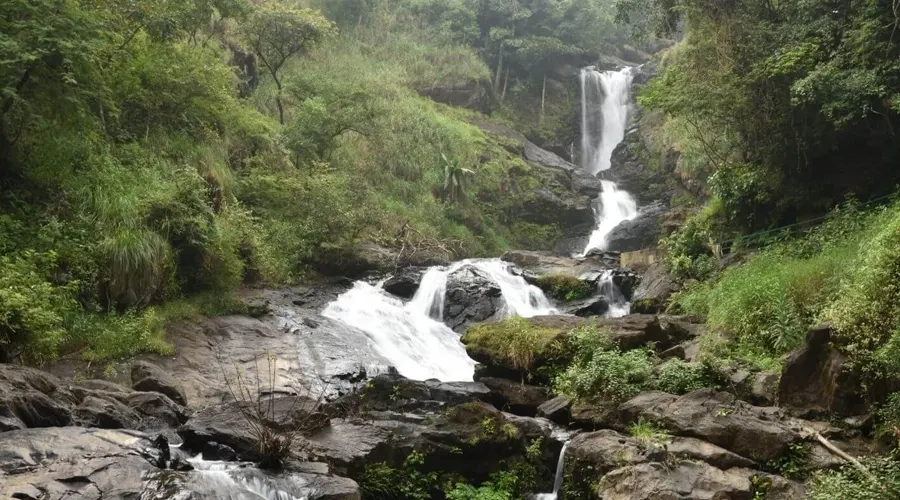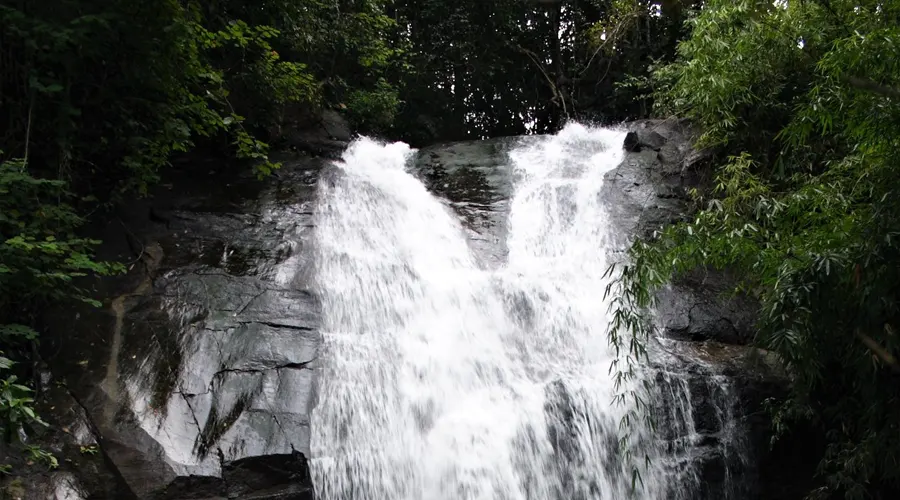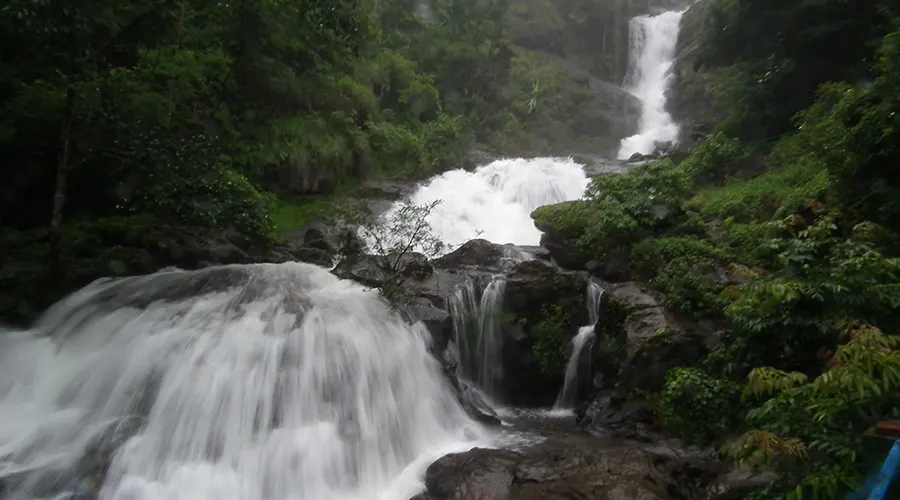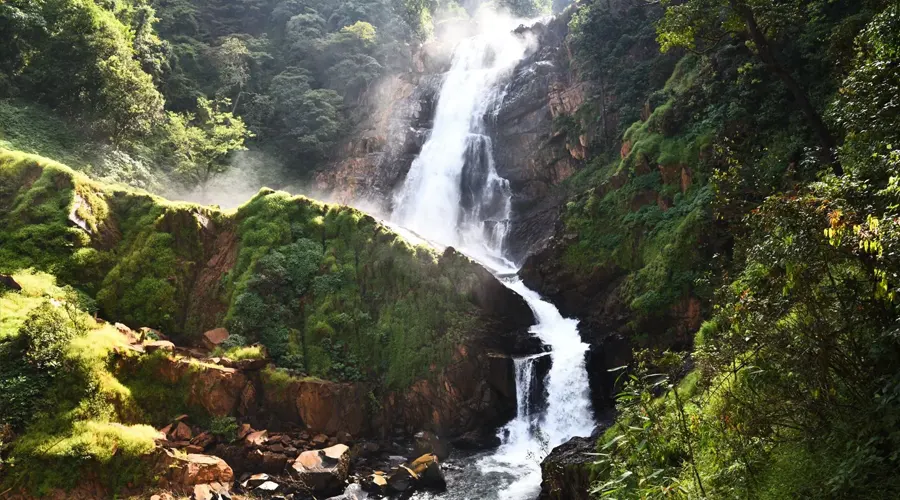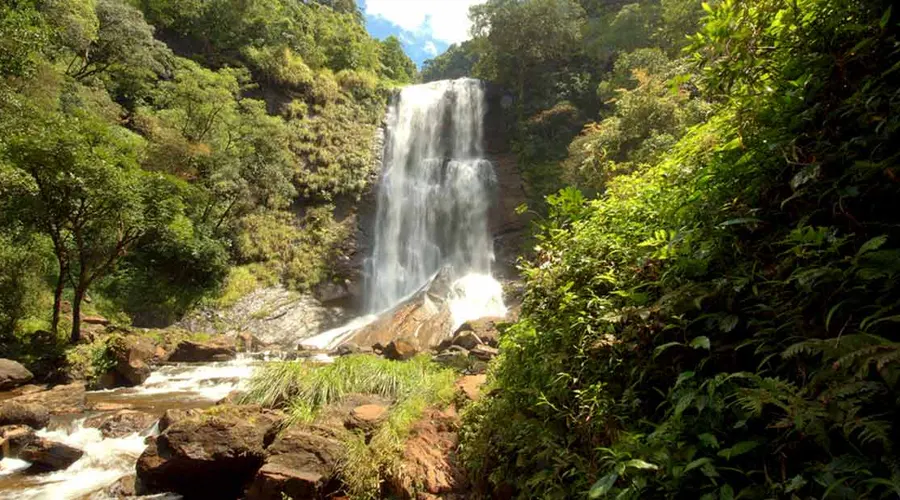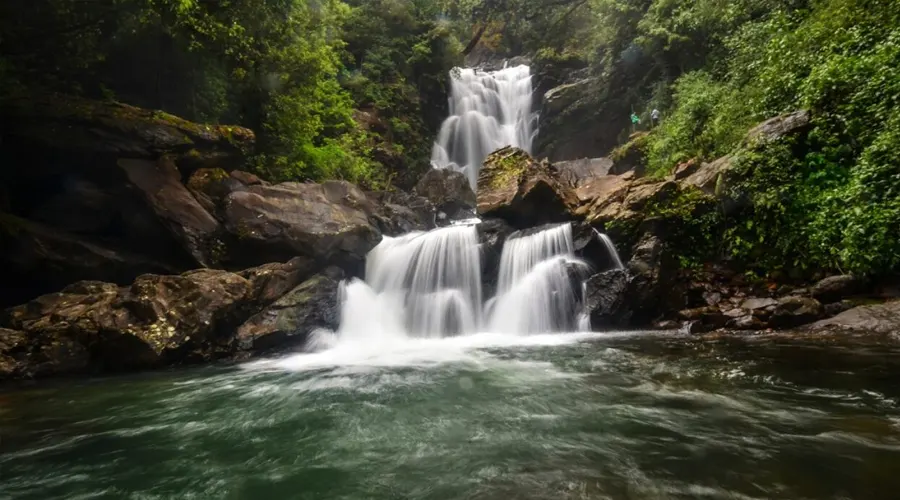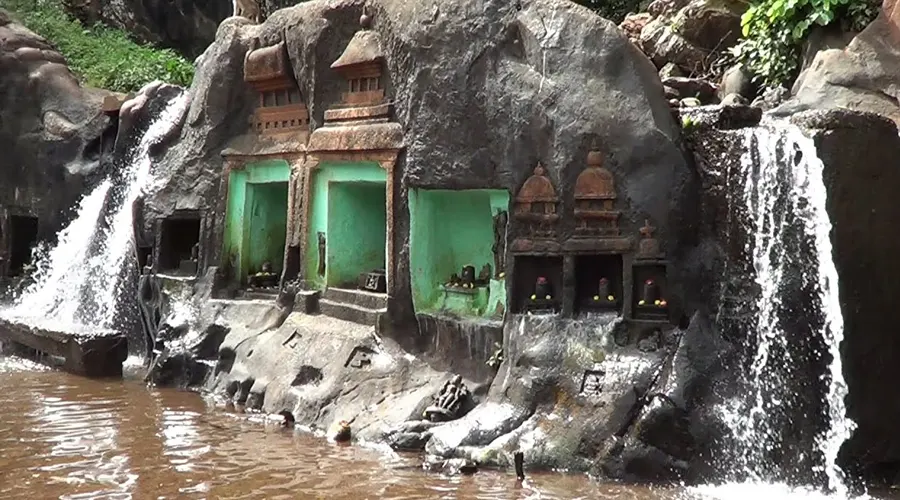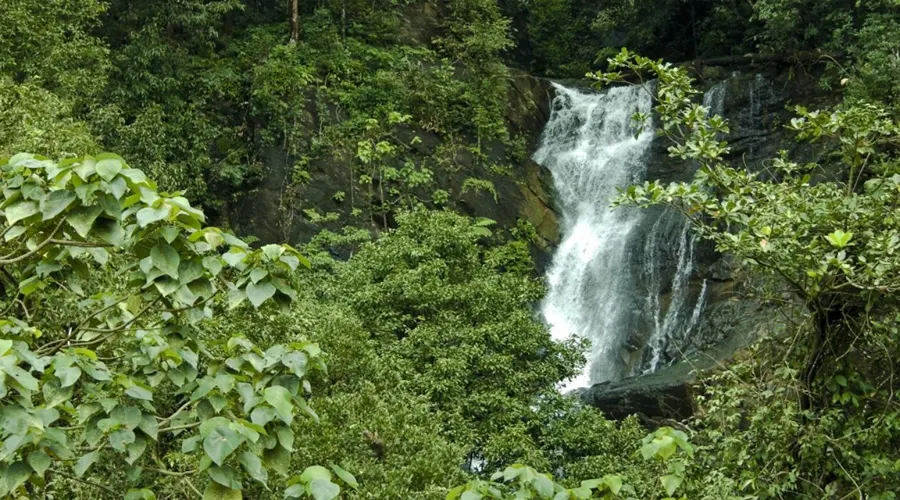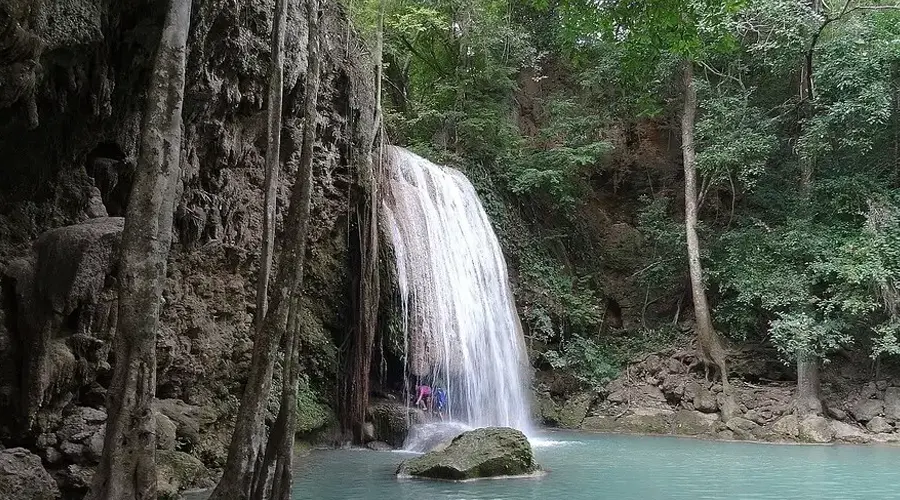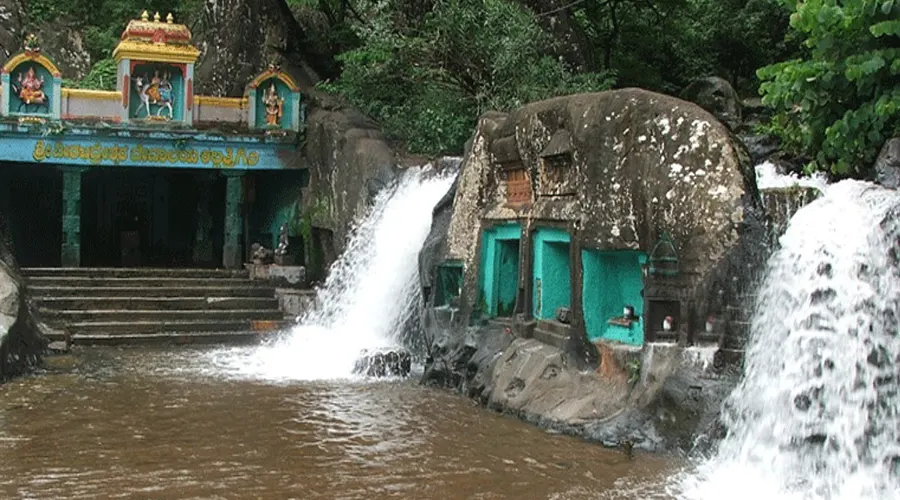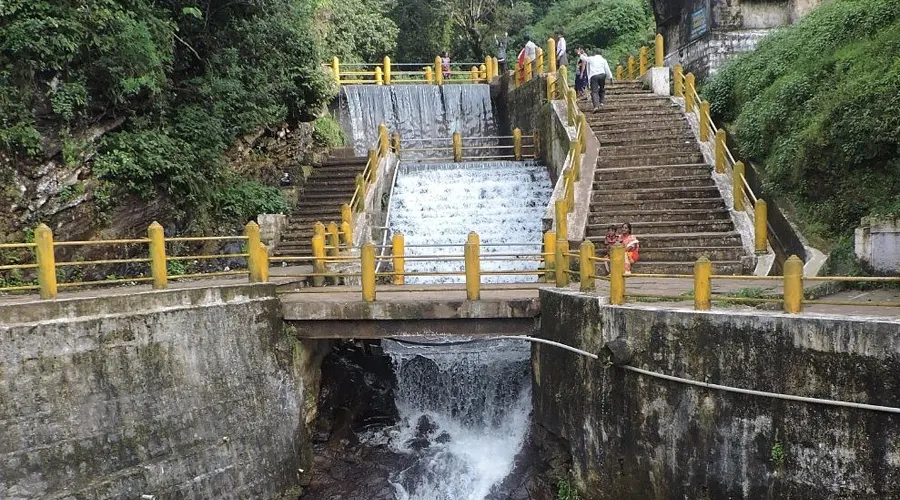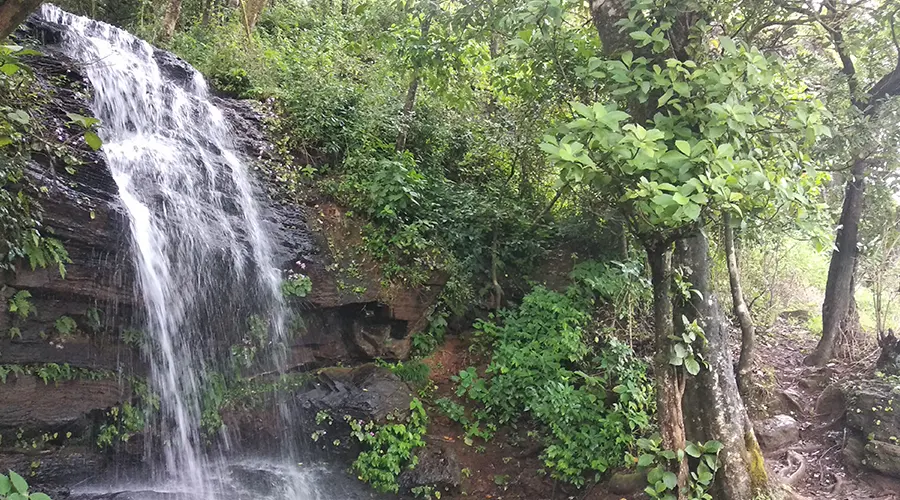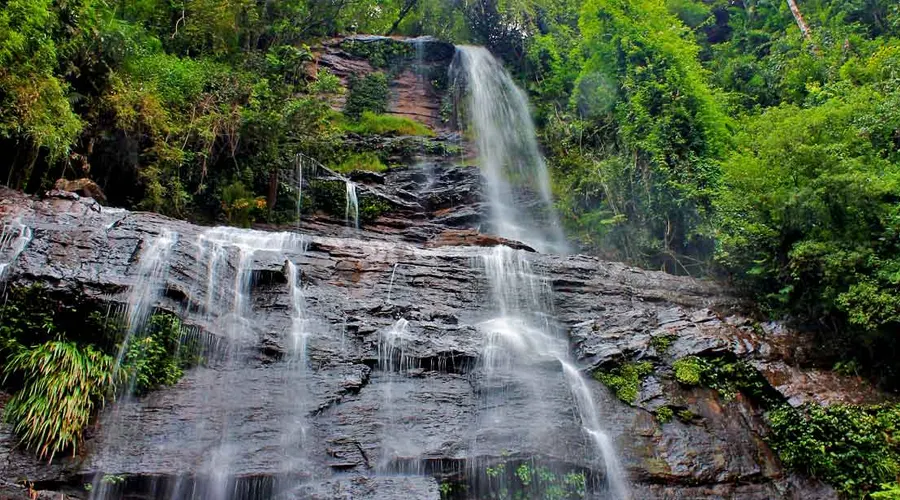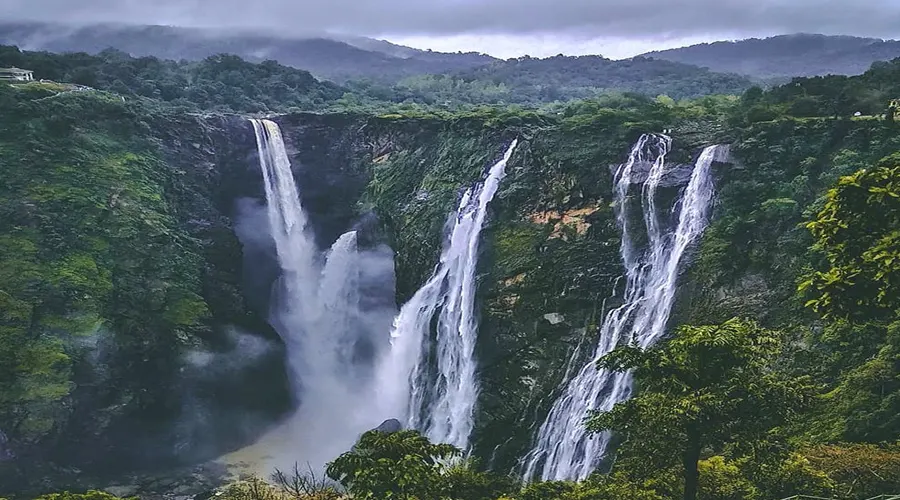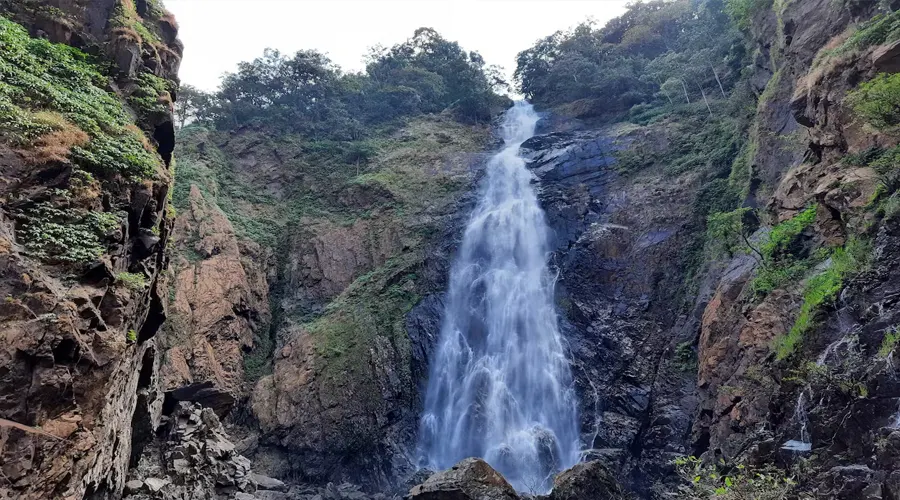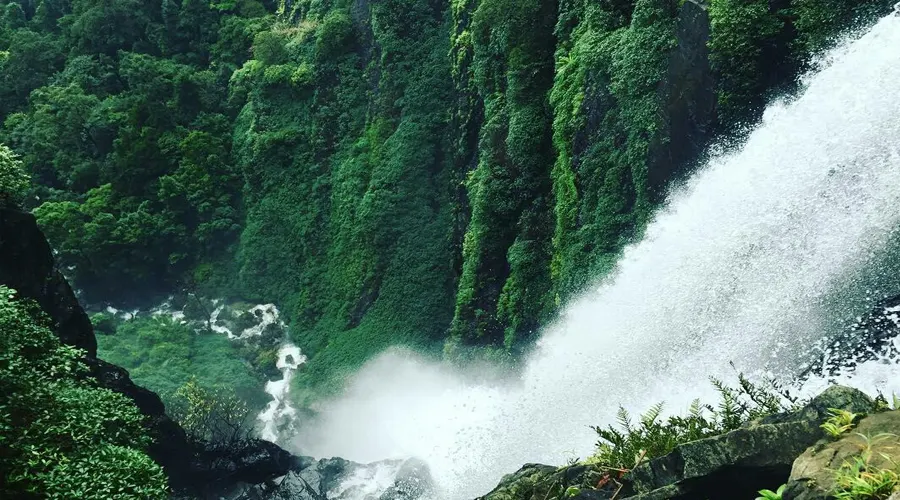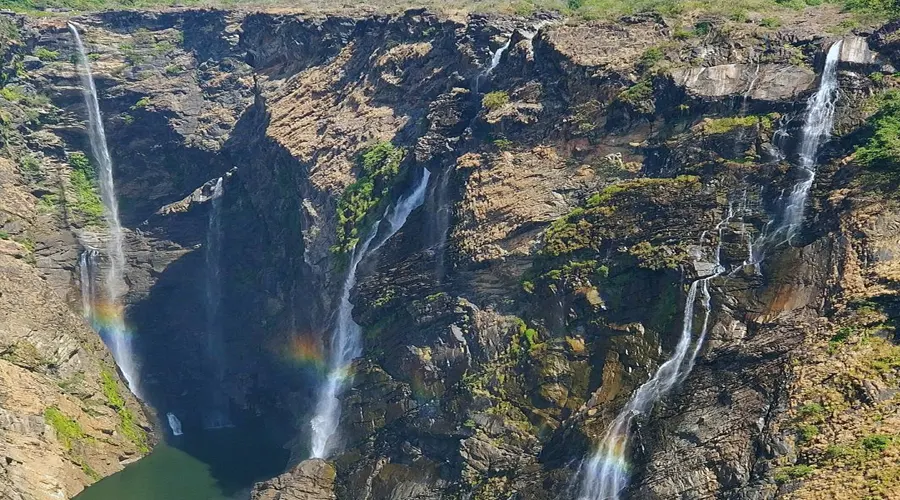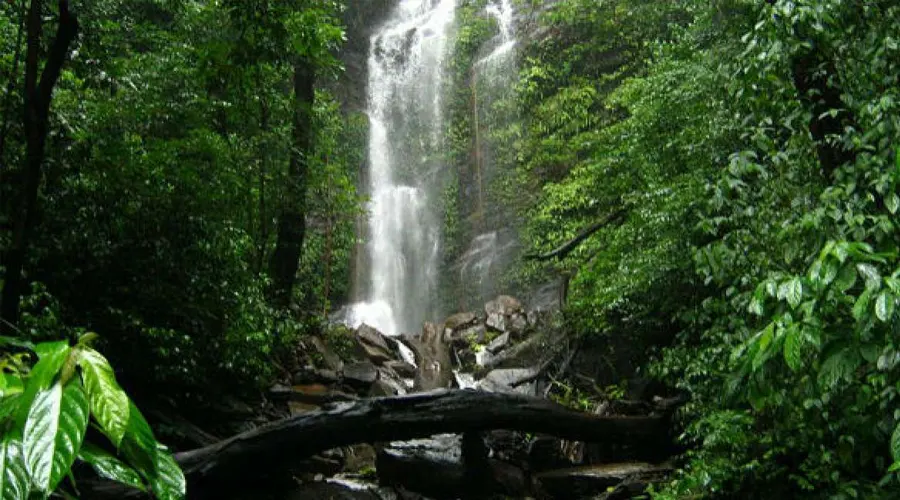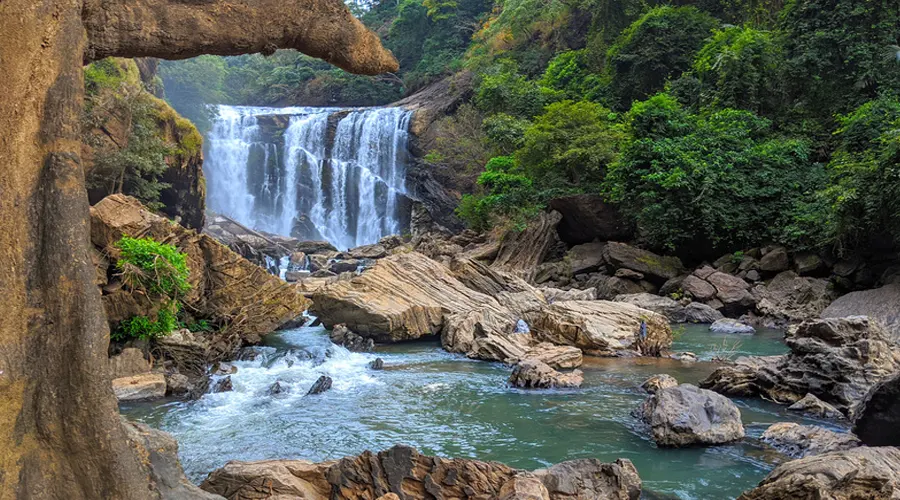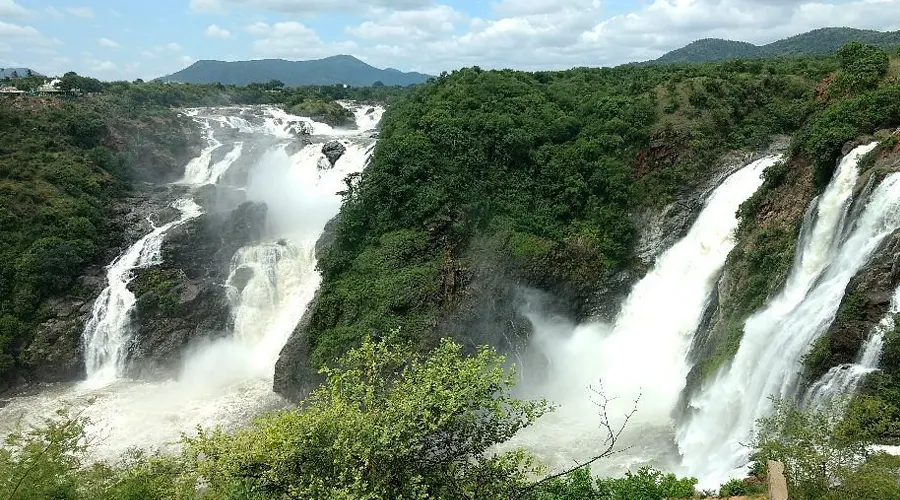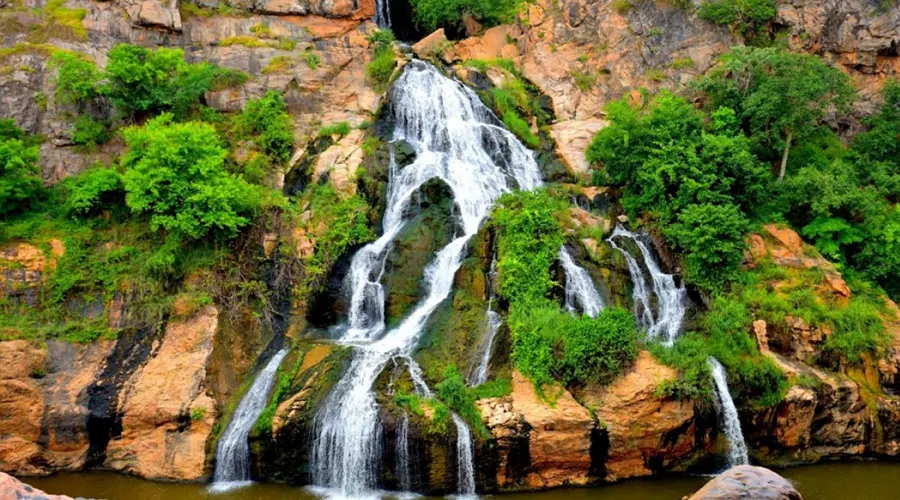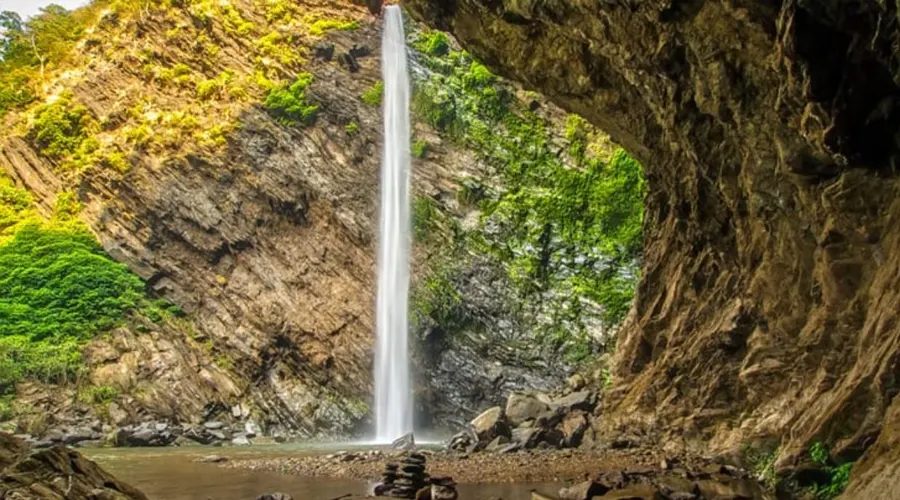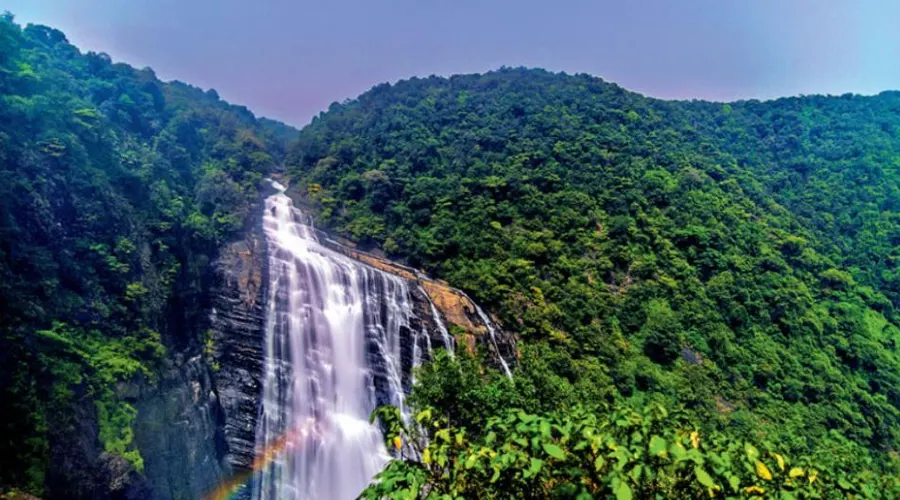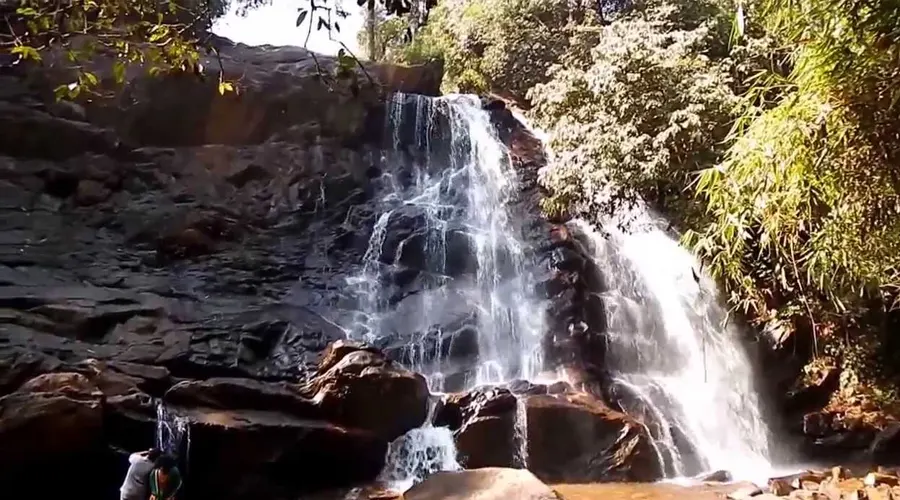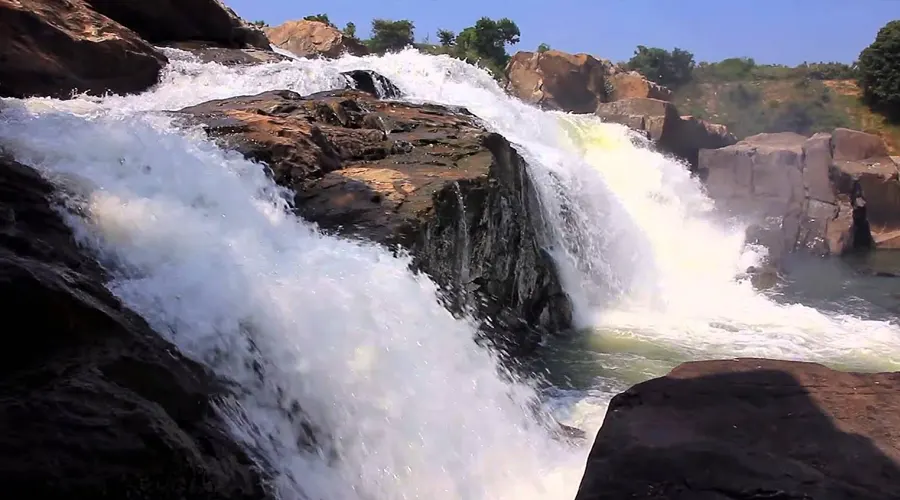Karnataka
Karnataka is a southwestern state of India. It is bordered by the Arabian Sea to the West, Goa in the Northwest, Maharashtra to the north, and Telangana to the Northeast. Andhra Pradesh to the East, Tamil Nadu to the Southeast, and Kerala to the South.
It was originally known as the state of Mysore but was renamed in 1973 as Karnataka. Bangalore or Bengaluru is the capital and a big IT hub or Silicon Valley of India. It is the 4th largest technology cluster in the world and ranks 1st Digital city in the world. The state is also called the knowledge, research, and innovation hub of Asia.
Karnataka is known for its tradition and scenic beauty with places like Mysore, Hampi, and Pattadakallu to see. When we talk of tourism in South India, Karnataka is often overlooked in favor of the beaches of Goa, Temples in Tamil Naidu, and backwaters of Kerala. But Karnataka is a beautiful land blessed with timeless monuments, world heritage sites, luscious green forests, marvelous wildlife, romantic hill stations, stunning beaches, and vibrant cultures.
Karnataka- a southern state of India was formed on 1 November 1956, and from then Karnataka celebrates Karnataka Rajyotsava every year on the 1st of November. Karnataka has a unique culture and tradition different from all the other states of India. Its heritage, culture, and tradition might amaze you.
History Of Karnataka
Traced back to prehistoric times, the history of Karnataka is replete with the rise and fall of innumerable dynasties and empires. Also known as Karunadu which means elevated land, this high plateau region was first discovered by the Mauryas. Then came Satavahanas who ruled here for 300 years. Then shifting the reign to Kadambas and the Pallavas, the Gangadikaras, the Chalukyas of Badami, the Rashtrakutas, the Kalacharis, the Hoysalas, the Yadavas, the Kakatiyas, and a few more who stayed here for a brief time. After which the power went into the hands of Malik Kafur who was a Muslim ruler, however, in 1336 Hindu kingdom at Vijayanagar was established by Harihara (Hakka) and Bukka.
Art and architecture flourished tremendously in Karnataka during the reign of the Hoysalas. Then came Wodeyars, who took Karnataka on lease from the Mughal king, Aurangzeb in the 15th Century. Hyder Ali took over the throne after the death of Krishnaraja Wodeyar II. Then came the most powerful ruler of contemporary Karnataka, Tipu Sultan who was the son of Hyder Ali. Considered the Tiger of Mysore, he, however, succumbed to death in the Anglo-Mysore War. His fatal death in 1799 left Karnataka in the hands of the Britishers. The native state remained under the control of Wodeyars who were merely puppets, until 1947 when India got its independence. Originally known as Mysore, the state was renamed Karnataka in 1973.
Culture Of Karnataka
So many dynasties and empires left a few distinctive cultures and values which together enriched the state. The ever-evolving state of Karnataka has a rich cultural heritage, literature, architecture, folklore, music, painting, and many art forms that have been inherited from their ancestors. Apart from the architectural marvels left by the Mauryan Empire, many ancient monuments and fossils have been excavated in Karnataka. Leading ahead in the IT sector, the state is also known as the knowledge, research, and innovation hub of Asia.
The capital city Bengaluru notches up to the 1st Digital city and is ranked as the 4th largest technology cluster in the world. Having given shelter to Tibetan refugees, being influenced by various dynasties, and also being Buddhist sacred land, Karnataka is a blend of many religions. Hinduism is the most prominent religion, while Jainism, Christianity, and Islam are practiced widely.
Tourism in Karnataka
Karnataka has many tourist locations and each location speaks in volume and uniqueness.
The coastal coast of Karnataka is not very large, but it is home to India’s most beautiful seaside. The state between the west coast and the Deccan Plateau is located in the forest, pavilion, temple, cave, beach, riverbank, lake, coffee plantations, waterfalls, ruins, and other places.
The state is known for its historical places, hills, wildlife sanctuary, and world heritage sites, and the City of Bangalore is at the forefront of rapid economic and Technological Development.
Mysore, Aihole, Bijapur, Badami, Hampi, Hassan, Mangalore, and Pattadakal are some of the Historical destinations in Karnataka.
Hampi was the ancient capital city of the powerful Vijayanagar Empire. The Mysore Palace is the second most visited tourist destination in India after the Taj Mahal. Many other palaces in Karnataka such as the Bangalore Palace, Mysore Palace (Ambvillas Palace), Tipu Sultan Mahal, Nalkonad Mahal, Rajendra Vilas, Jagan Mohan Mahal, Jayalakshmi Vilas Mansion, Lalita Mahal, Rajendra Vilas, Chewuwaba Mansion, Shivappa Naika Palace and Darya Daulat Tiger Mahal Etc. are also seen.
We also see the famous Islamic heritage of Bijapur, Bidar, Gulbarga, Raichur, and other parts of the state. Round Dome, Bijapur is the world’s second-largest pre-modern dome. Karnataka has two World Heritage Sites called Hampi and Pattadakal. We can also see Bellary Fort built for protection by Tipu Sultan.
Karnataka is also famous for Shimoga district’s waterfalls, where Asia’s second-largest waterfall is found. There are many famous beaches in Karnataka’s Malpe, Kup, Mervendhe, Karwar, Gokarn, Mudeswar, and Surendalk. For the climbers, Karnataka is no less than a paradise. Yana in Uttar Kannada, the fort in Chitradurga, Ramnagar in Bengaluru district, Shivgange in Tumkur district, and Tekal in Kolar district are similar to Paradise for climbers.
Agumbe and Kodachadri in the main hill areas of the state, Baba Budgari, Kemmanguandi in Shimoga district, Kudremukh in Chikkamagaluru district, etc. Mullanagiri, Pushpagiri, Nandi Hill, Kundadari, Tadi and Amol, Talakavari, Mahaswara Hill, Himavad Gopalaswamy Island, Amberguda, etc. are the other hill cities of the state and area.
Many wildlife sanctuaries and national parks such as Dandeli Wildlife Sanctuary, Dariji lazy bear sanctuary, peacock sanctuary in Banakpura, Ranbenur Black Deer Sanctuary, Haveri District; Deorai Wildlife Sanctuary, Hampi; Attivari Bird Sanctuary, Shirahatti; Biliirigiranga Swamy Temple Wildlife Sanctuary, Bhadra Wildlife Sanctuary, Brahmagiri Wildlife Sanctuary, Kaveri Wildlife Sanctuary, Melukote Temple Wildlife Sanctuary, Mandya District; Mookambika Wildlife Sanctuary, Nuhu Wildlife Sanctuary, Pushpagiri Wildlife Sanctuary, Sharawathi Valley Wildlife Sanctuary, Shettihalli Wildlife Sanctuary, Someshwar Wildlife Sanctuary, Talavavari Wildlife Sanctuary, Gudvi Bird Sanctuary, Mandagade Bird Sanctuary, Kaggaldu Belur Sanctuary, Gudvi Bird Sanctuary, and Bonal Bird Sanctuary, etc.
Some of the famous sea basins include Karwar, Gokarna, Murudeshwar, Malpe Ullal, and Mangalore. The main events to see are Lighting at Mysore Palace during Dussehra, Jumbo Savari or elephant march during the Hampi festival, and the buffalo race during the Kambala festival.
Art and Culture of Karnataka
Earlier, painting involved not only the act itself but the entire process, from making one's colours to watching as they come to life. Paper, wood, cloth, etc. were some of the materials artists used as a base for their paintings. Brushes weren't made from synthetic materials but were made from the original hair of animals like camels, goats, and squirrels. The Mysuru style of paintings usually are representations of legends, mythical scenes, and the royal family. This style of painting from Karnataka is known for its simplicity and intricate detailing across the country. The artists used a particular gesso paste, consisting of zinc oxide and gum, which formed a protective layer on the painting, which has kept them undamaged even after 150 years.
Karnataka is home to 50 different tribes, each having their traditions and customs. Tribal art is another indigenous art form. Hase Chitra mud painting is an art form emerging from the Shimoga and Karwar districts and is currently being revived.
Karnataka has a peculiar tradition of Art and Culture. Art is one of the major ornaments which the state is carrying forward from dynasties. Many of the monuments encrypted with sculptures define the Art and Culture tradition of the state. During that period the artists were the most skilled workers, whose works make us believe in the ancient traditions. Most of the places like Mysore Palace, Chamundeshwari Temple, Cave Temple, and many other ancient monuments define the Art and Culture tradition of Karnataka. Karnataka artist uses wood, paper, and clothes as the base to make a painting. Karnataka has many art forms one of them is the Hase Chitra mud painting which is one of the traditional paintings.
Heritage of Karnataka
Karnataka is very famous for its historical monuments and cultures. The tourism sector of Karnataka is increasing day by day, as most of the tourists are attracted to the heritage of the state. Most of the monuments in Karnataka have great historic relations. Tipu Sultan Palace, Mysore Palace depicts a great history of the King of Mysore, who once defeated Britishers from acquiring the region. Hampi is one of the UNESCO World Heritage Sites here. Many old temples and old monuments have a great contribution to the state’s integrity. Chamundeshwari Temple, ISKCON Temple, plays a great role in profiting the tourism sector of Karnataka.
Bangalore is the capital of Karnataka, also known as Silicon City which settles many of the World’s Top-Class Companies. People in Karnataka usually like trekking, many of the tourists visit Nandi Hill, Shivaganga Hill, and Savan Durga Hill to feel the beauty of nature. There is no seasonal tourism, people from all over the world visit Karnataka to enjoy the culture, tradition, and food, and mostly to discover the Heritage, which the state had occupied from dynasties.
Customs, Religions, and Traditions in Karnataka
Karnataka is a state where people of all religions stay, mostly you will observe Hindu traditions and customs. The tradition is replete with showing proper respect to elders and even every part of nature. Karnataka houses many temples and their custom says many things while entering a temple, you should remove your footwear outside the temple, women should not wear any tights or any other revealing dress, and men should not wear half pants or half-sleeved shirts. These rules are strictly monitored in almost every temple in Karnataka.
Other than temples Karnataka is also famous for big Churches, Christianity also resides here. Many places in Karnataka are the roots of Muslims, Tipu Sultan’s dynasty proves that. Muslims believe that women are respectable, hence they follow a unique custom that women don’t go to mosques to pray so that no unknown man can see them with bad intentions.
There is a most famous culture among Kannadigas called theatre culture also known as Rangabhoomi. Natakas on literature related to epic and Puranas are also done in public in praise of the heroic characters. Also, on some special occasions like Dasara and Maha Shivratri, stories and devotions are narrated or sung in public to increase the awareness of their culture and traditions.
Languages of Karnataka
The diversity of Karnataka isn't just in its art and history but also in religious and linguistic ethnicity. Combined with their long histories, the cultural heritage of the state lies in its language. The Kannadigas envelop most of the state that comprises 30 districts, while Karnataka is also home to Kodavas, Tuluvas, and Konkanis.
Kannada
Kannada is spoken as a native language by about 74% of the people of Karnataka. Kannadigas are the native speakers of Karnataka who form a dominant ethnic group. Being the administrative language of Karnataka, Kannada is considered a classical language by the recommendations of linguistics experts and the government of India.
Tulu
The native speakers of Tulu called Tuluvas also form a dominant ethnic community of Karnataka. Tuluvas cover most of Dakshina Karnataka, Udupi, and Kasargod of Kerala which is often termed Tulu Nadu. The Tuluvas form 2.38% of the total population of Karnataka.
Konkani
The people who speak the Konkani language are widely spread across Uttara Karnataka, Dakshina Karnataka, and Udupi. In the region of Karwar taluk, Konkani speaker covers up to 78% of the population and a significant number of people are settled in Sirsi and Belgaum. According to the census of 1991, Konkani speakers are 1.78% of the population of Karnataka.
Kodava
Kodava language is probably one of the unheard languages of Karnataka with just 0.25% of native speakers. The Kodava people are settled in the Kodagu district of Karnataka. Apart from Kodavas, according to the Karnataka Kodava Sahitya Academy, there are 18 other ethnic groups who speak Kodava which include Iri, Heggade, Banna, Koyava, Kembatti, Kudiya, and Meda.
Urdu
The second-largest ethnic group with 9.72% of the total population with a majority of speakers from the Muslim community. Although the Urdu speakers are unevenly distributed in Karnataka, about 43.5 % are bilingual and prefer speaking Kannada rather than Urdu.
Beary or Byari
Beary or Byari is spoken by the Muslim communities of the Dakshina Kannada and Udupi districts. This language has influences of Malayalam, Arabic, and Kannada.
Classical Music of Karnataka
The only state that flourishes with both Hindusthani music from the North and Carnatic music from the South is Karnataka.
Hindusthani
The Hindustani musicians of Karnataka have won several awards like the Kalidas Samman, Padma Vibhusan, and Padma Bhushan. Hence, Karnataka has achieved a prominent place in Hindusthani Music. Basavaraj Rajguru, Puttaraj Gawai, and Sawai Gandharva are some famous performers to name a few.
Carnatic
Purandara Dasa is one of the prominent composers in Karnataka who composed close to 75,000- 745,000 songs in Kannada and Sanskrit. Owing to his contribution, he is considered the Father of Carnatic Music. He became a source of inspiration to composers like Tyagaraja. Purandaradasa later laid down a framework to impart knowledge of Carnatic music.
Classical Dances of Karnataka
Considered a difficult art form, Yakshagana lacks a written script and depends entirely on the artist's ability to be spontaneous, to improvise, to be a good orator, and have a sound knowledge of the plot and character. The unique art form of Yakshagana has various elements like dance (Nrithya), makeup (Bannagarike or Mukhavarnike), background singing and direction (Bhagvathike), two forms of drums (Chande Maddale) and conversation (Arthagarike). The art form is 500 years old, and the entire portrayal takes place in refined Kannada, without even a word of any other language. It is an important tradition and also a prevalent art form.
Siddi community's Dammami dance is also another traditional dance form. This dance form derives its name from an instrument Damam, made from leather. Initially, the dance was performed by Siddis post-hunting to honor the tribal God Siddhinas. However, as the activity itself is banned, the dance is now performed once a year for the whole night. The performances are done in the Konkani language and depict a story, usually about the hunt or farming activities like plowing, harvesting, etc.
Festivals of Karnataka
In Karnataka, many local and national festivals are celebrated in their unique tradition and style. They have different rituals and traditions for celebrating each festival. Ganesh Chaturthi also known as Vinayaka Chavithi in Kannada is celebrated on a large scale with their local delicacies offered to Lord Ganesha on his birthday like Payasams, and Kosambhari. The people of Karnataka use willows to make thalis. Apart from these festivals they also celebrate festivals like the Hampi festival to show the richness of culture in the region of Karnataka through fireworks, music shows, and pomp processions.
Festivals like Gowri Habba which is celebrated one day before Ganesh Chaturthi are one of the significant festivals in Karnataka which celebrate Lord Gowri (mother of Ganesha). Folk dance festivals like Karaga Festival and Pattadakal Dance Festival are celebrated by giving honour to gods and goddesses by performing the folk dance as a ritual. There is also a festival celebrated in Dakshina Kannada districts named Kambala Festival which is celebrated by performing a unique and traditional buffalo race popular among the farming community. These types of festival in the state of Karnataka shows us the various parts of the culture and tradition of the people.
Harvesting Festivals like Pongal and Ugadi are celebrated as New Year’s Day as per the Hindu calendar. Some festivals are also popular in different regions in Karnataka like in the Mandya district, the entire city can bee is seen in a festival mood during Vairamudi Festival. A huge procession is being held to the sacred Melukote temple in Mandya. Festivals like Karnataka Rajyotsava are celebrated as the formation day on 1 November of each year. Varamahalakshmi Pooja is celebrated here in different ways and rituals from other states to propitiate Goddess Lakshmi who grants boons.
It is one of the important festivals where Vrata is performed by women in Karnataka. Festivals like Dussehra famous all over the country are also celebrated in its own unique and different way in Karnataka. Also known as Vijayadashami, it is the Nadahabba (state festival) of Karnataka. Cities in Karnataka like Mysore is very famous for this festival as it is celebrated as one of the biggest and most prominent festivals of Karnataka.
Occupation in Karnataka
Nearly half of the workforce in Karnataka is engaged in traditional agriculture and related activities. The remaining people of the community, however, indulge in various public, and private sectors, and performance arts. The heart of the State, Bangalore is nicknamed the 'Silicon City' for the booming IT industry.
Karnataka offers a wide range of occupations to not only Kannadigas but people from other parts of India and even to people from other countries. Karnataka is full of greenery, farming, and cattle rearing are some of the occupations, in coastal areas people do fishing and sell them in the market which gives them another source of earning. Karnataka has India’s oldest gold mines and hence it has many gold mining industries and provides occupation. Bengaluru, the capital of Karnataka also known as the IT hub of India has many software industries which is one of the major parts of occupation in Karnataka. ISRO (Indian Space Research Organization) is there in Bengaluru, the pride of India also resides in Karnataka only, where Indian scientists do various research and help in the development of the country.
Wedding Customs in Karnataka
Weddings in Karnataka follow customs similar to Traditional Hindu Weddings. The first ritual happens to be Nandi Puja followed by a fascinating ritual of Kashi Yatra takes place, where the groom pretends to go on a pilgrimage saying that the family doesn't find a bride for him. The groom is appeased by his uncle at the end of the Kashi Yatre and then Dev Karya takes place in front of Lord Ganesha ending the pre-wedding rituals.
The Wedding starts with the Mandap (Mantap) Puja to cleanse the venue followed by the Var Puja and the Dhare ceremony. The most important part of every wedding is the Sapthapadi where the bride and groom walk around in a circle with the holy fire at the center of it seven times while chanting the Vows of Marriage. The wedding concludes with the groom tieing the Mangalsutra around the bride's neck.
Post-Wedding games are the fun part of every wedding where families and friends from both sides take part actively. After the celebrations and games are the most heart-touching moments for the festivities when the bride has to say bye to her parents and tears rolling down her cheeks is a normal scenario in these moments. The bride is welcomed to the groom's house with the Griha Pravesha ritual calling an end to the ceremonies and marking the start of a happy life together.
Costumes of Karnataka
In Karnataka, the attires vary from district to district as it is home to various communities. The Kodava people believed to be the direct descendants of Alexander the Great, have a distinct traditional attire that acts as an immediate differentiator.
Ilkal sarees are one of the popular traditional attires of women in Karnataka. Traditionally worn by women in the rural area, Ilkal sarees have now caught the attention of the entire country. Ilkal sarees are named after a town by the same name in the Bagalkot district of Karnataka. These are now sought after by saree lovers across the nation due to the unique process by which they are woven. They are made using a different looping process known as Tope Teni. This 8th-century method is entirely undertaken by the weaver himself, without the use of machines. The sarees are handwoven and are in high demand by the locals during the wedding season.
Cuisine of Karnataka
Karnataka is known for its wide variety of dosas and sambar. The food is rich in flavour and consists of various vegetarian and non-vegetarian dishes. However, a typical Kannadiga Oota (meal) consists of rice, sambar, pickle, ghee, dessert, and other curry-based dishes and is served on a banana leaf. Other popular dishes include the super light Neer dosa, Bisi Bele Bhaat which is a lot like a khichdi, and chicken curry known as Korri Gassi. Coconut and fruits are a staple element of these dishes. A signature dish of South Karnataka is the kori rotti. It consists of a thin wafer-like rotti made from rice, dipped in chicken curry. This is the traditional dish of the Tuluvas.
Mangalorean fish curry is one of the many popular dishes that are an intricate part of Karnataka's cuisine. The gassi is made in redfish or prawn curry or kori roti, another popular dish of Udupi cuisine. Coconut paste is an important element of the dish, and the curry itself is made up of versions of milder curries. Mangalore is a port city; fish is a staple diet for many people. It has beautiful coasts and streets lined with palm trees and was also a major seaport during the reign of Tipu Sultan.

